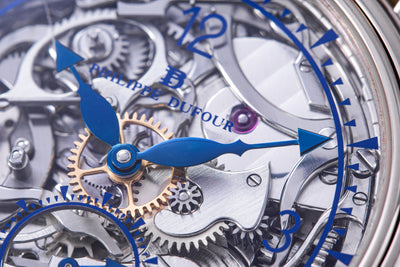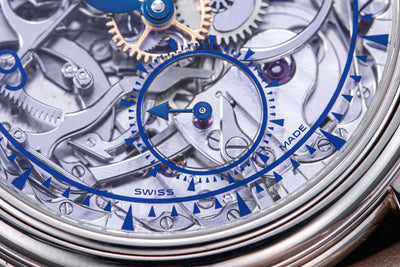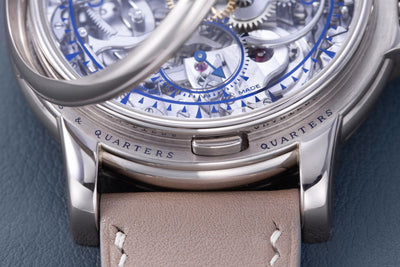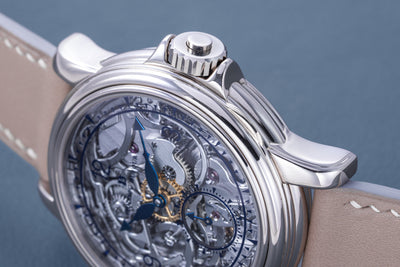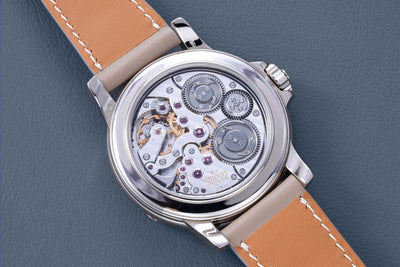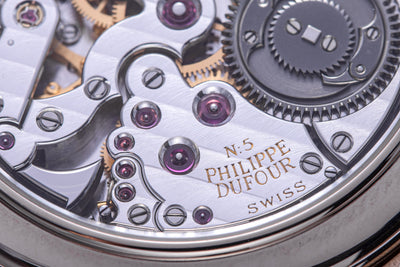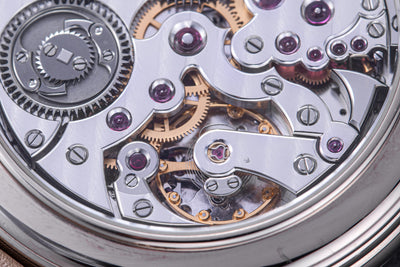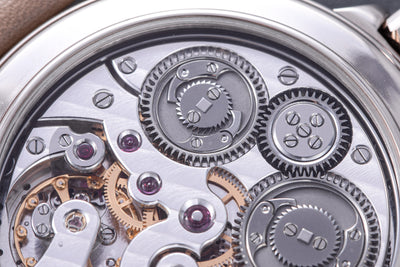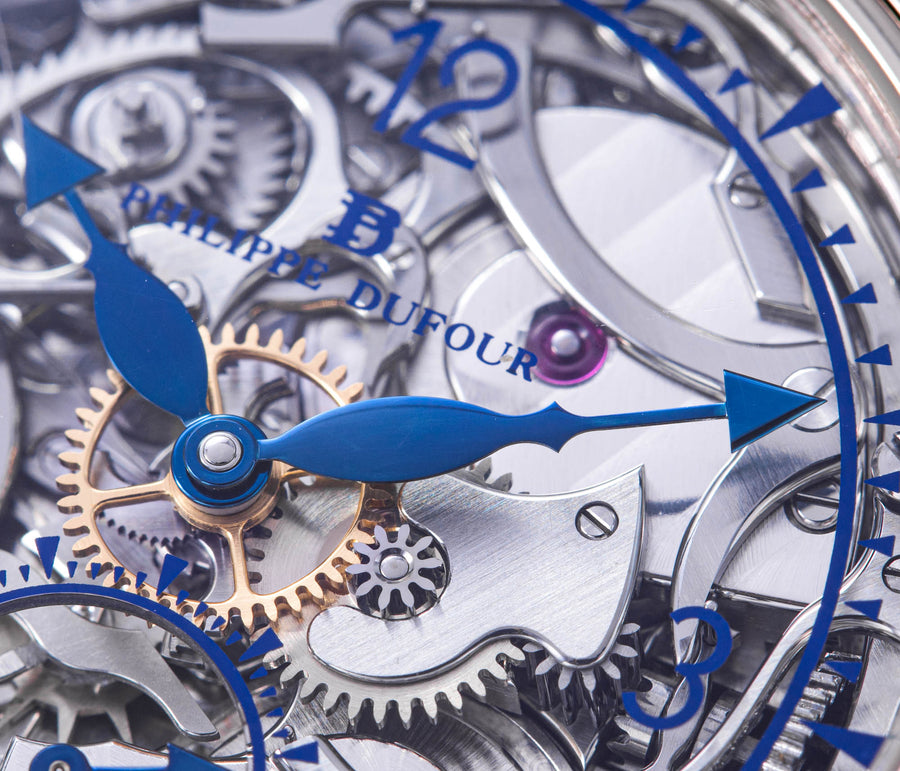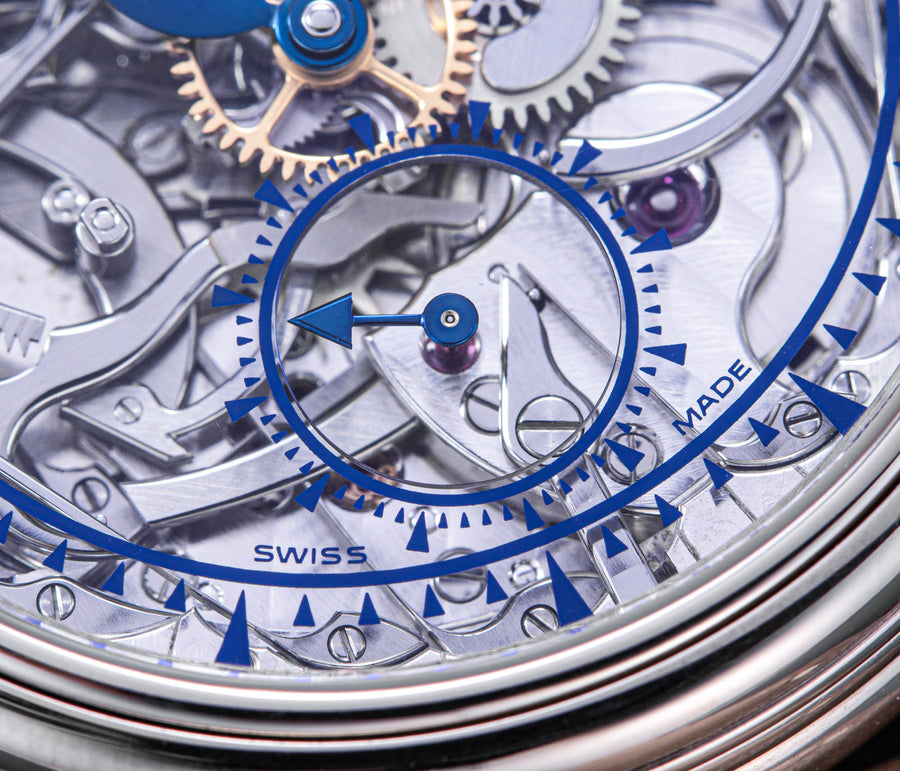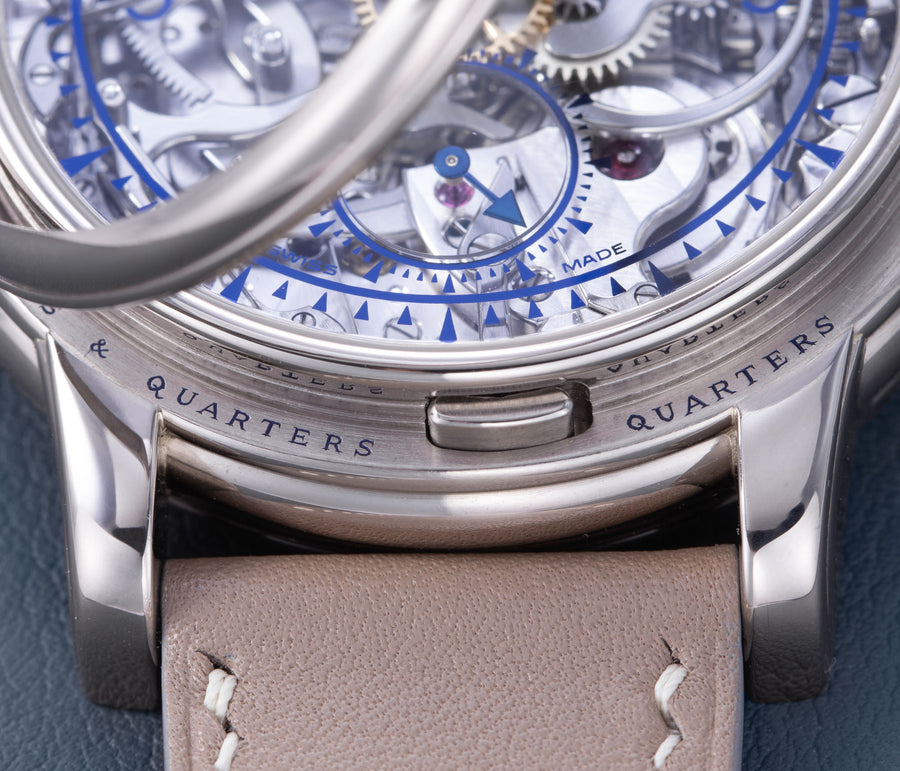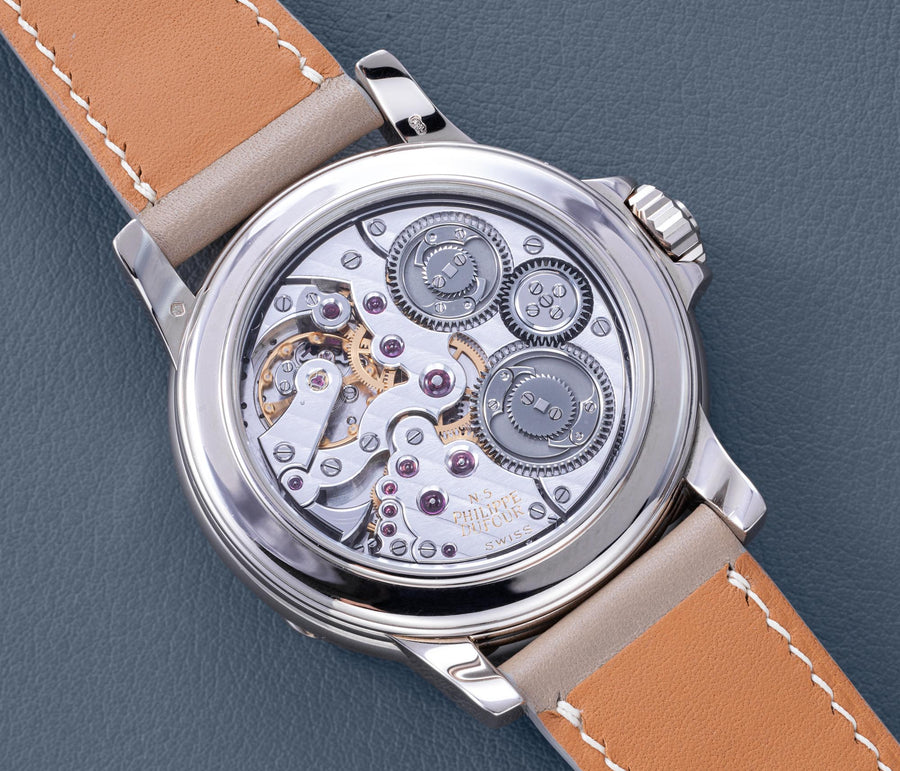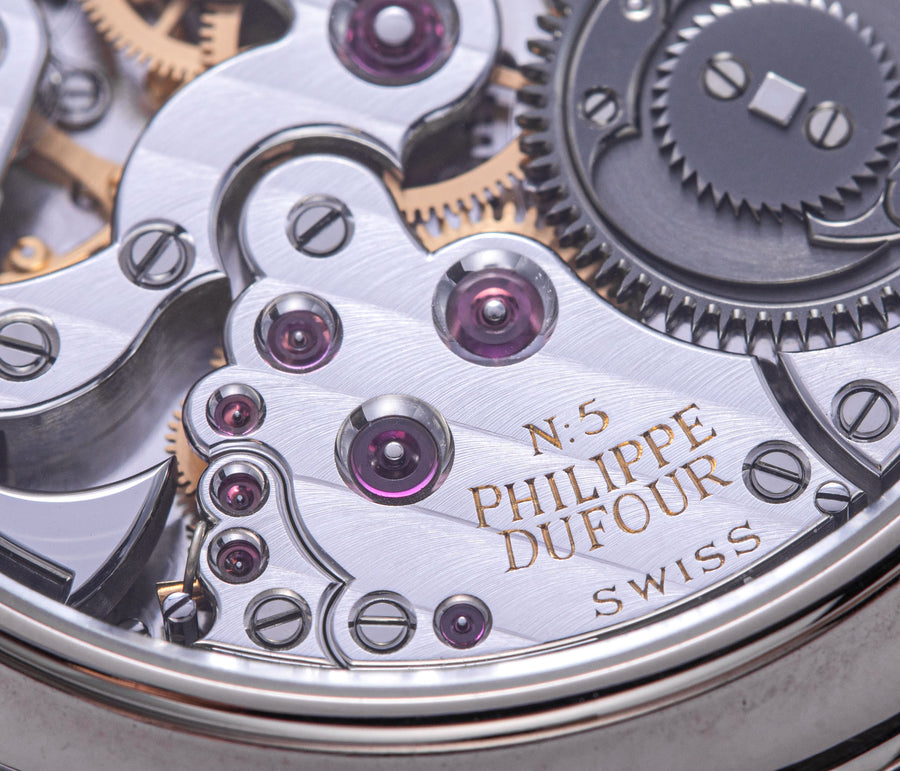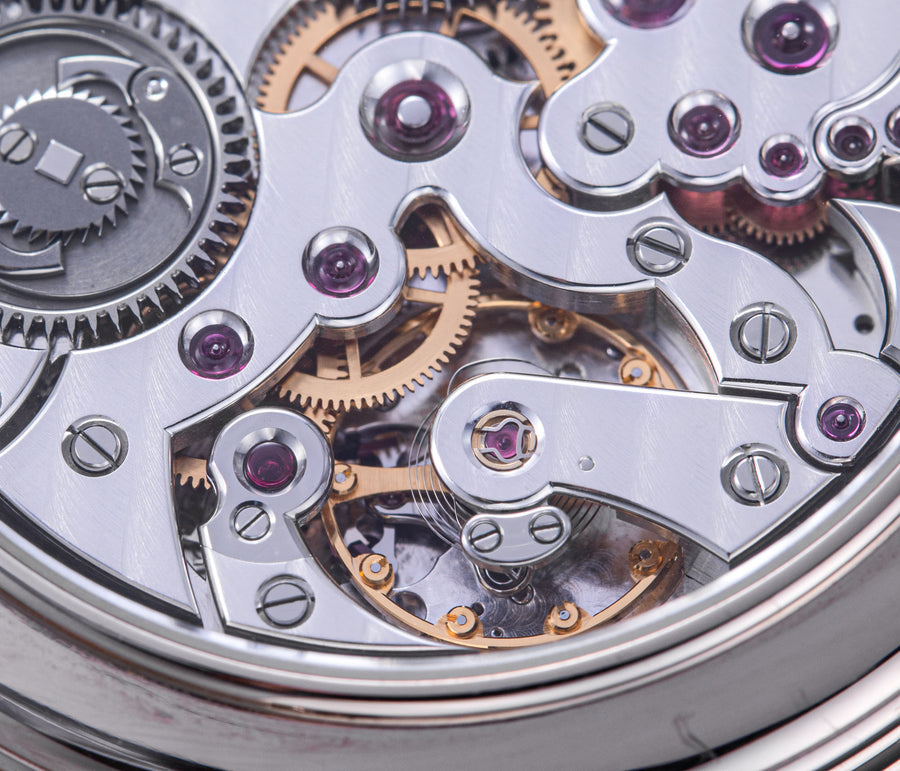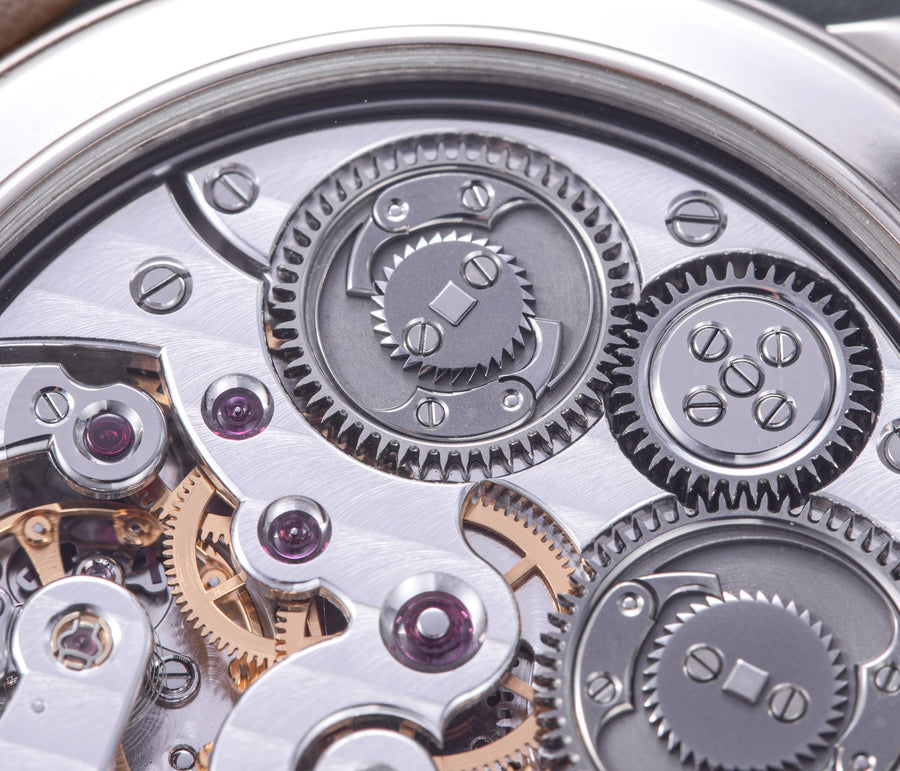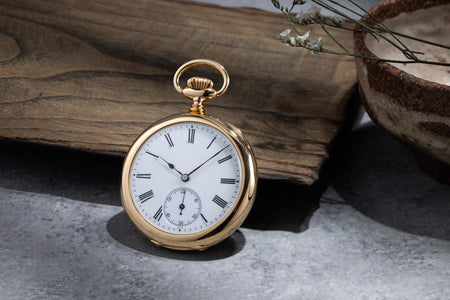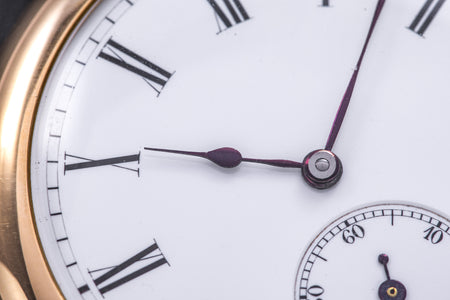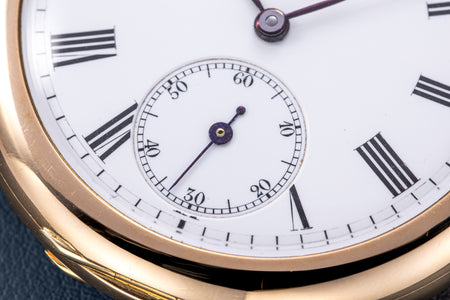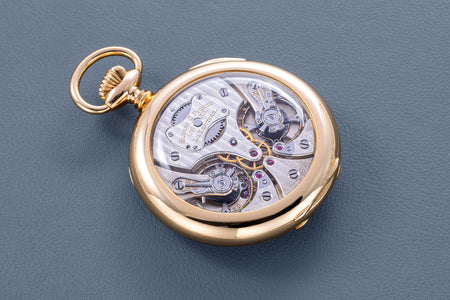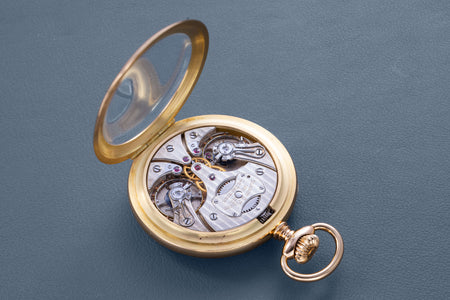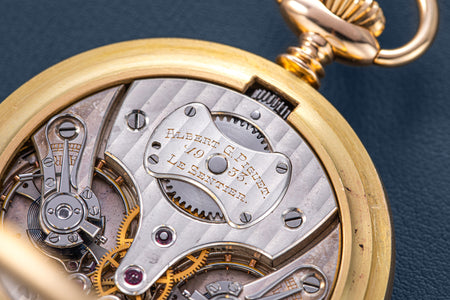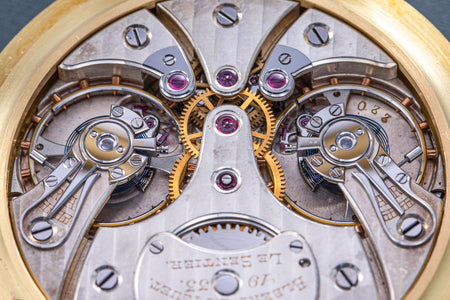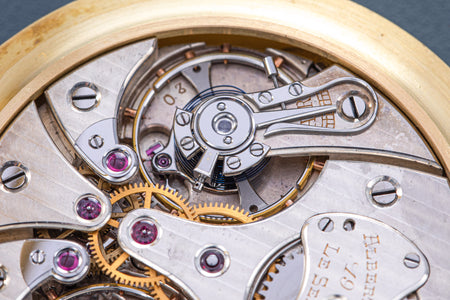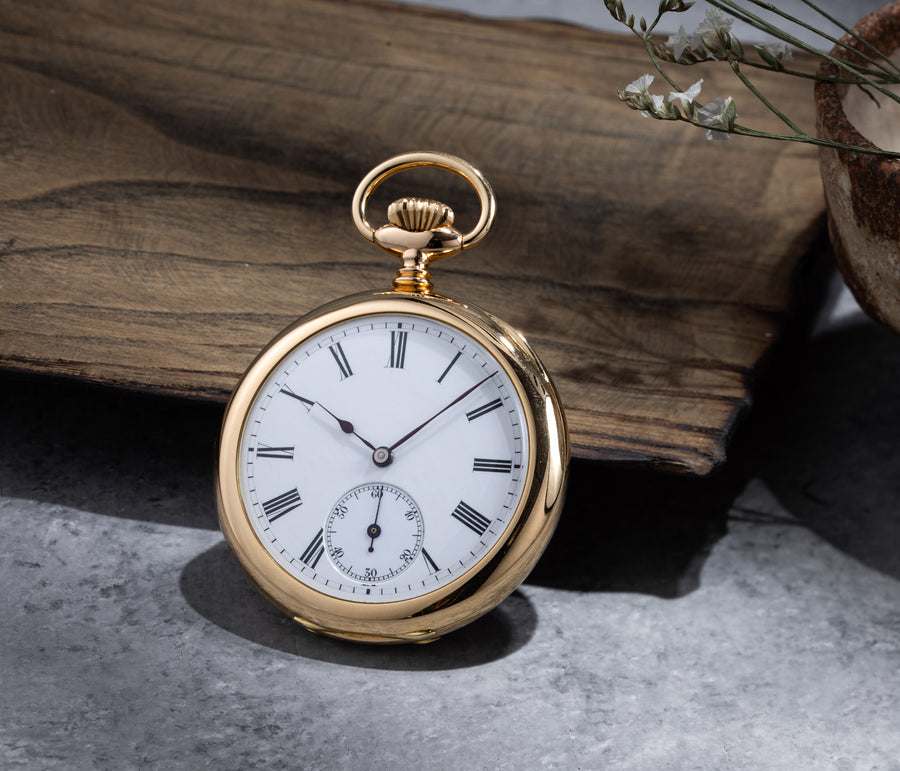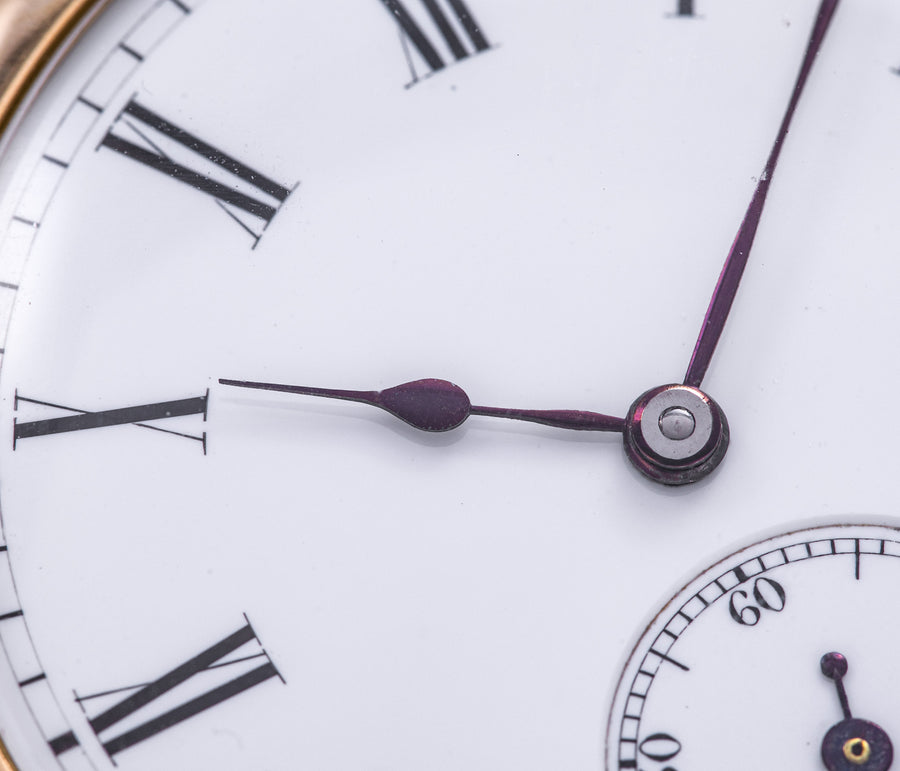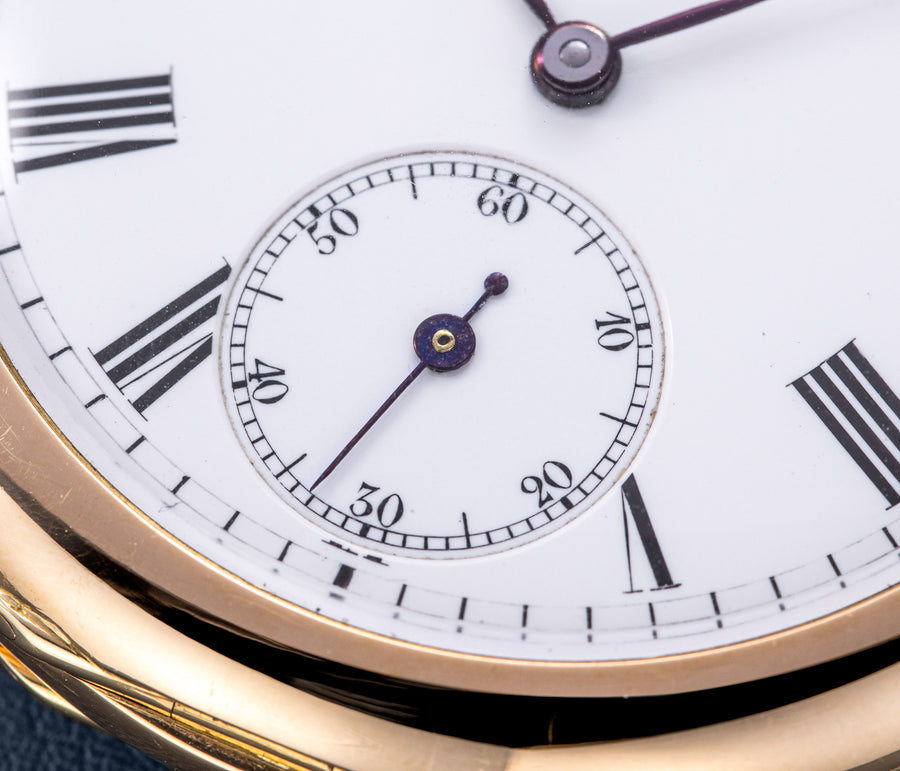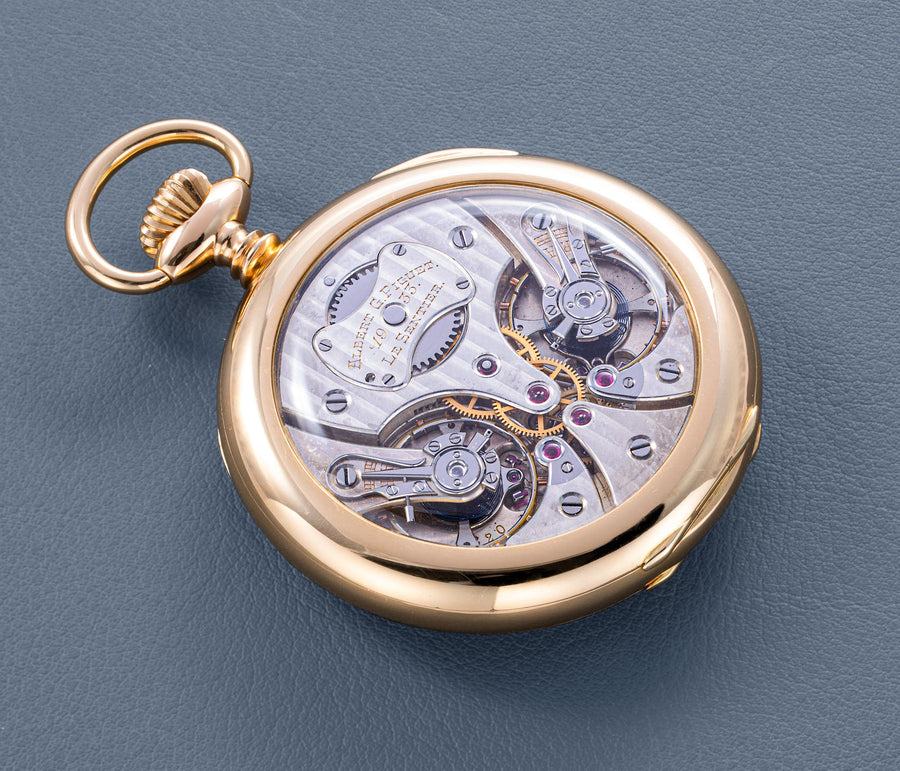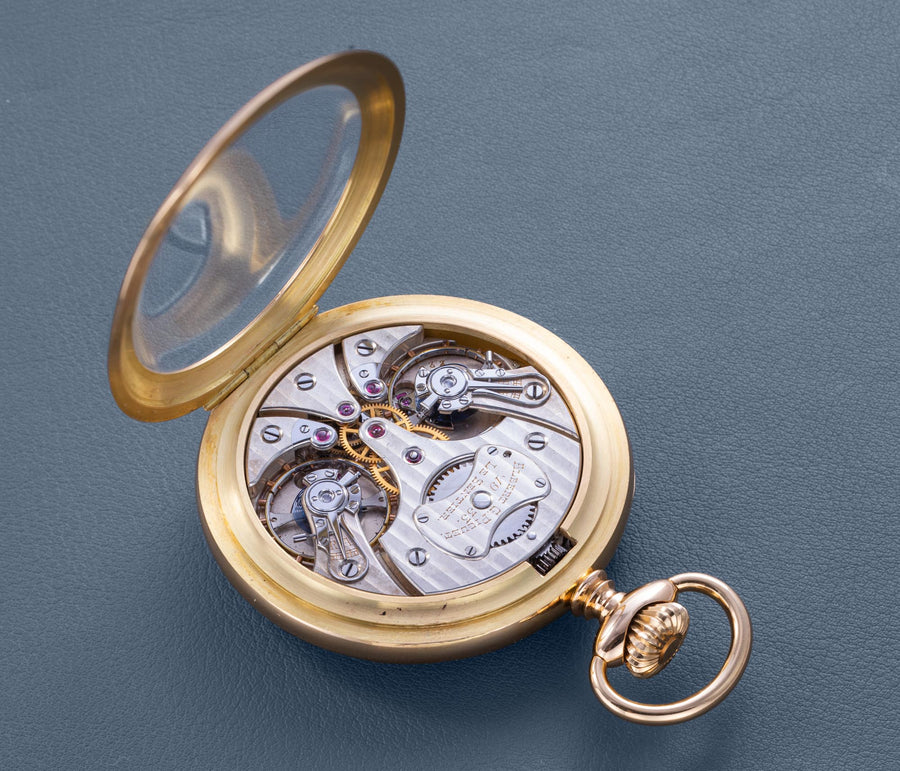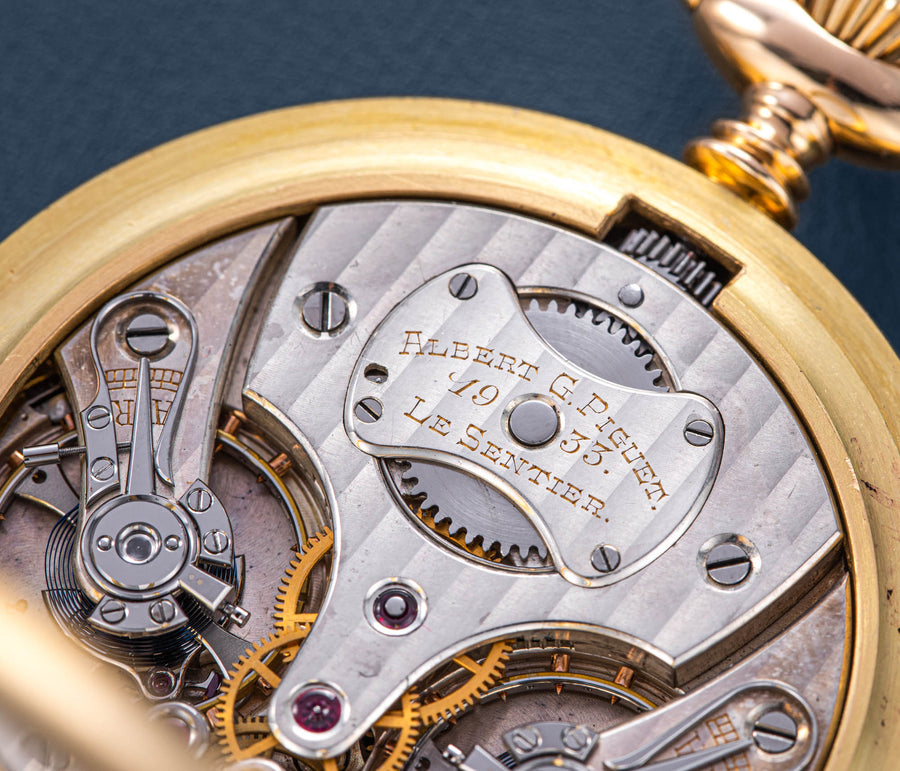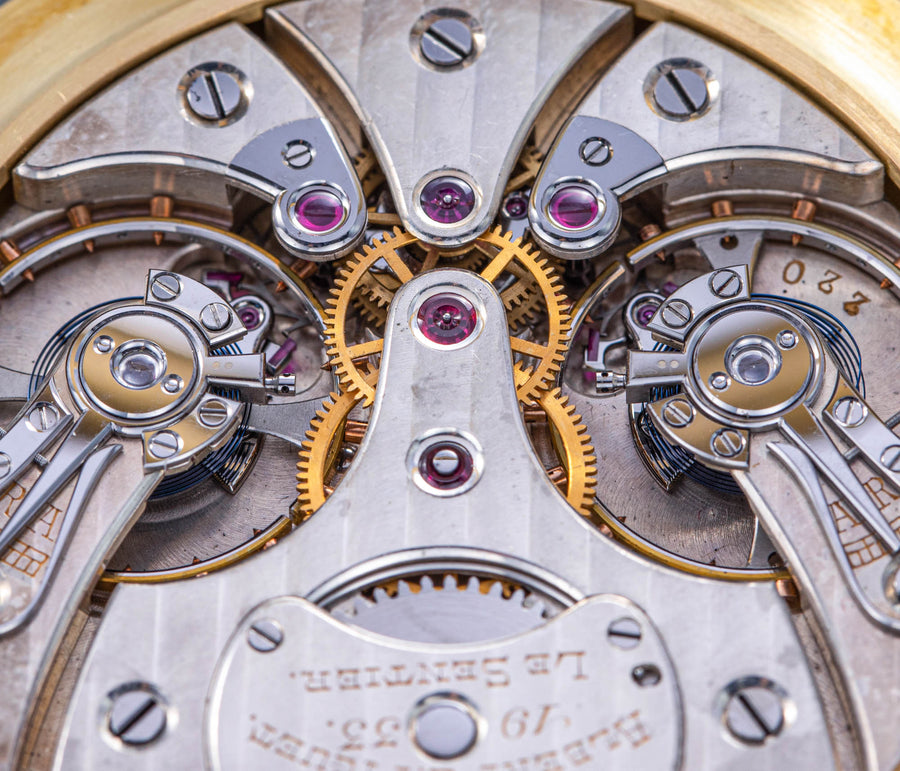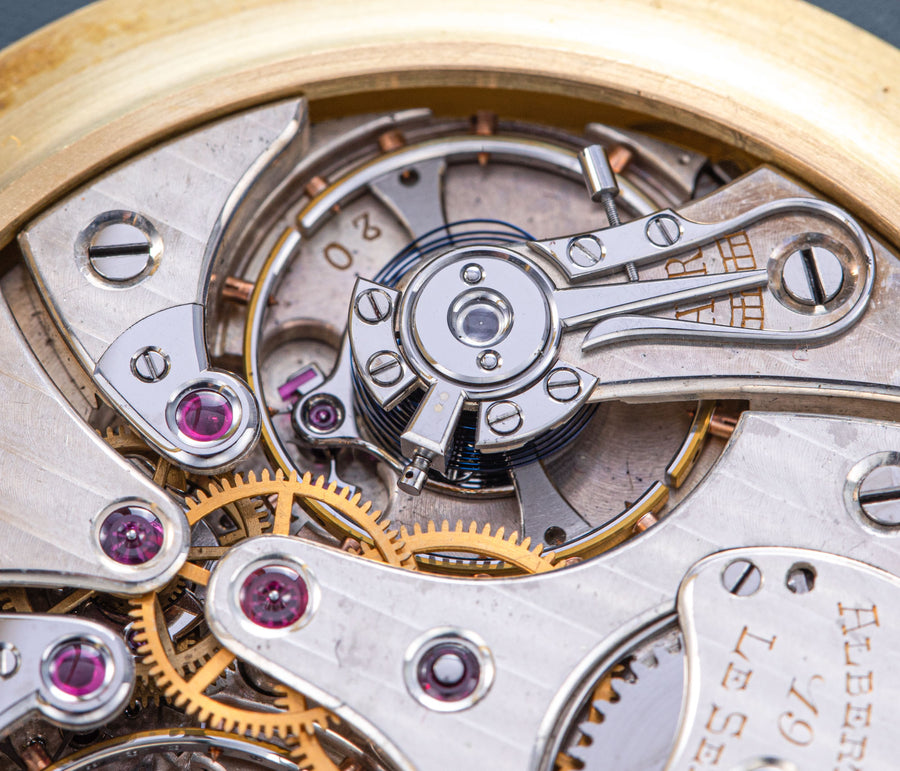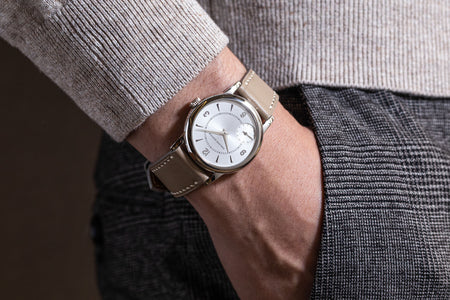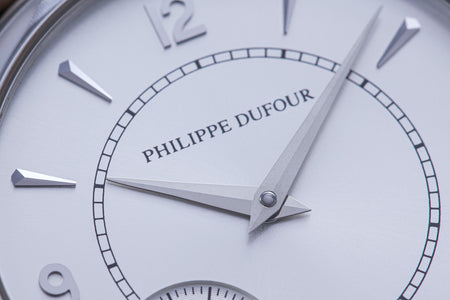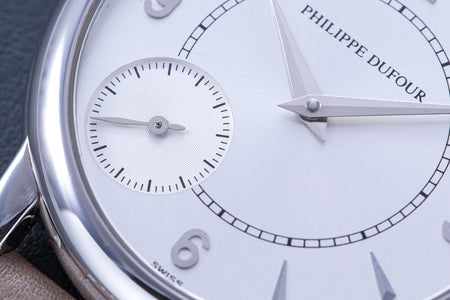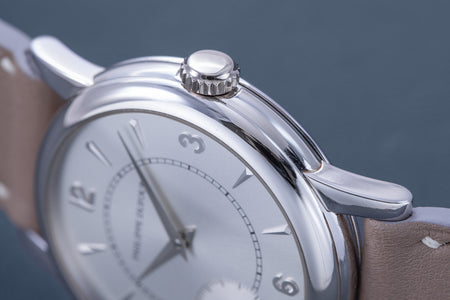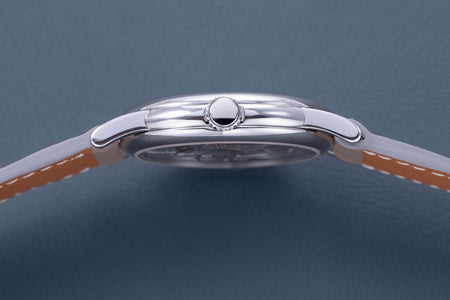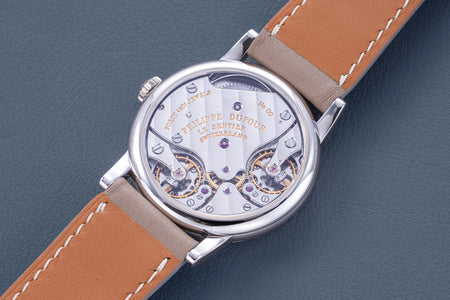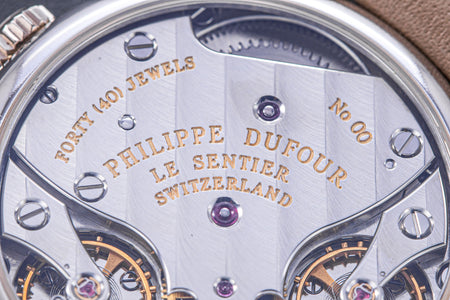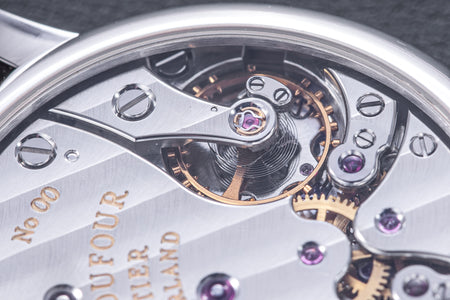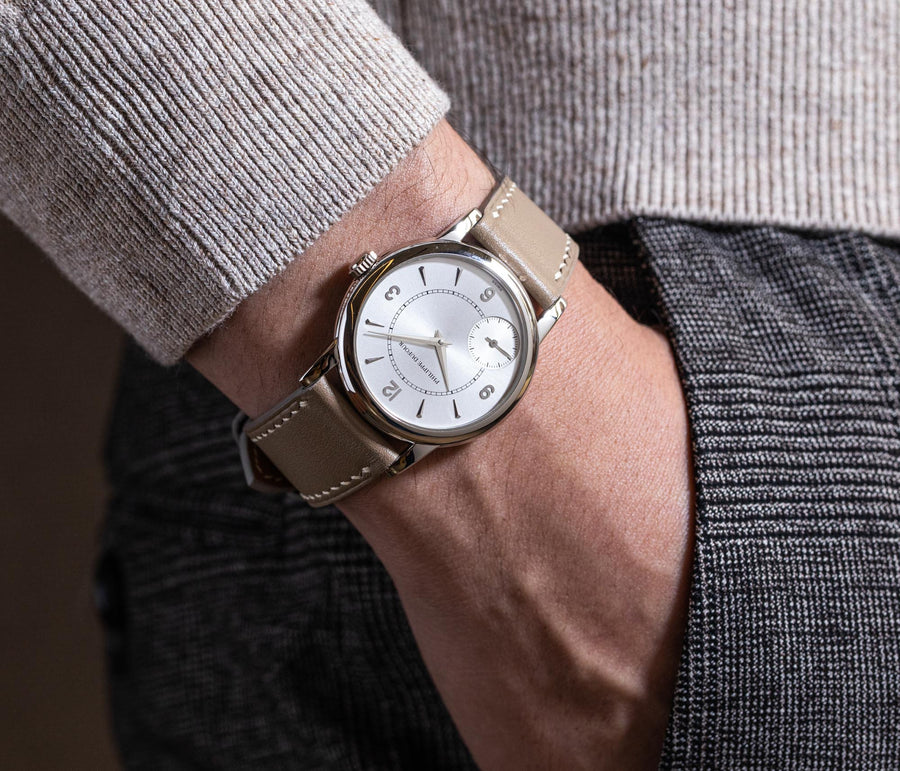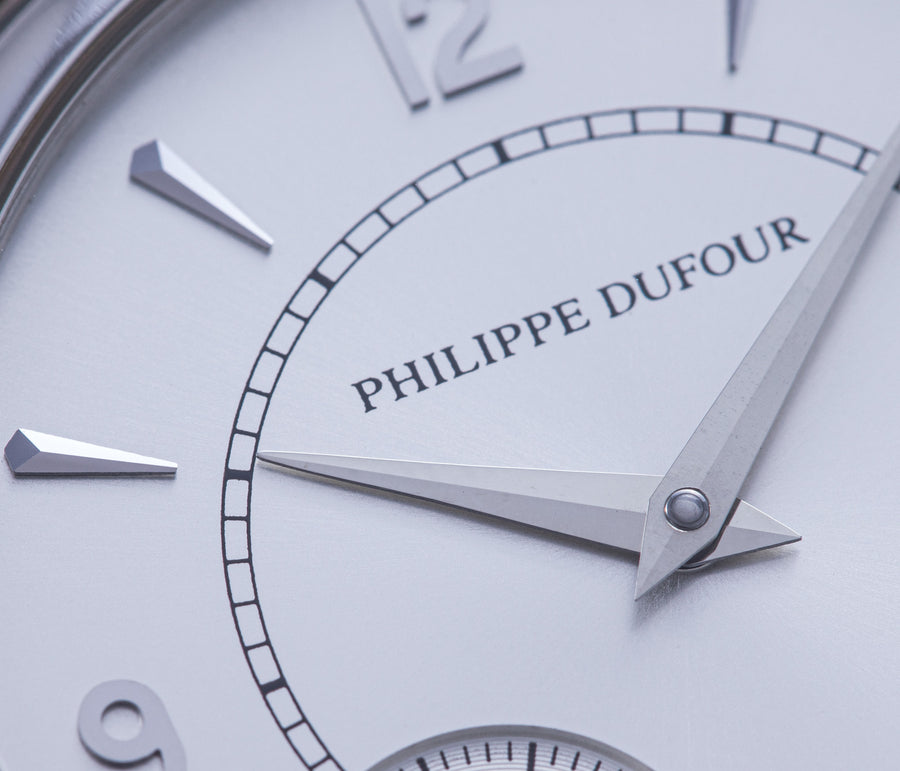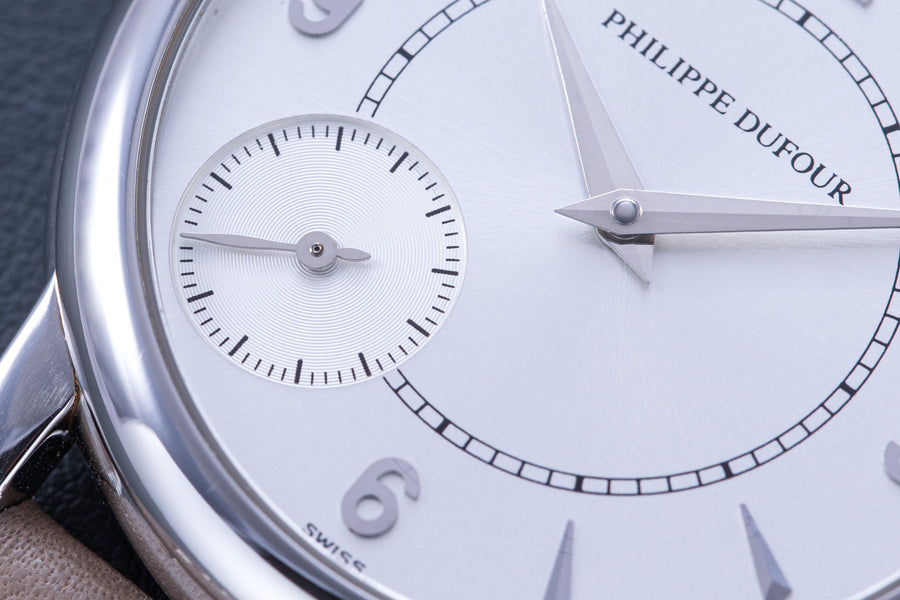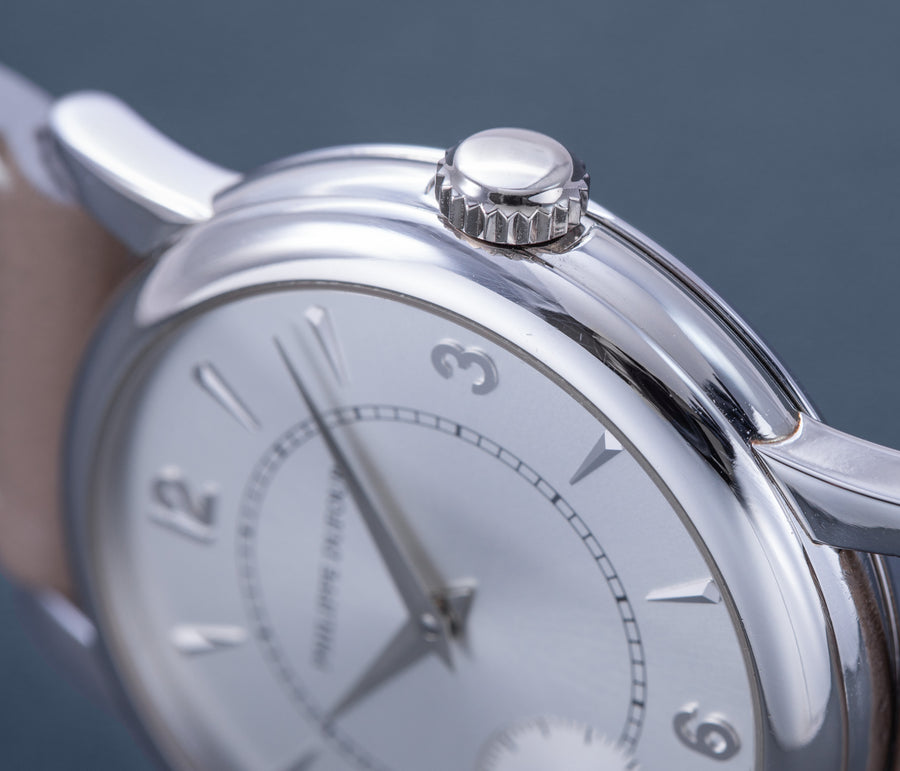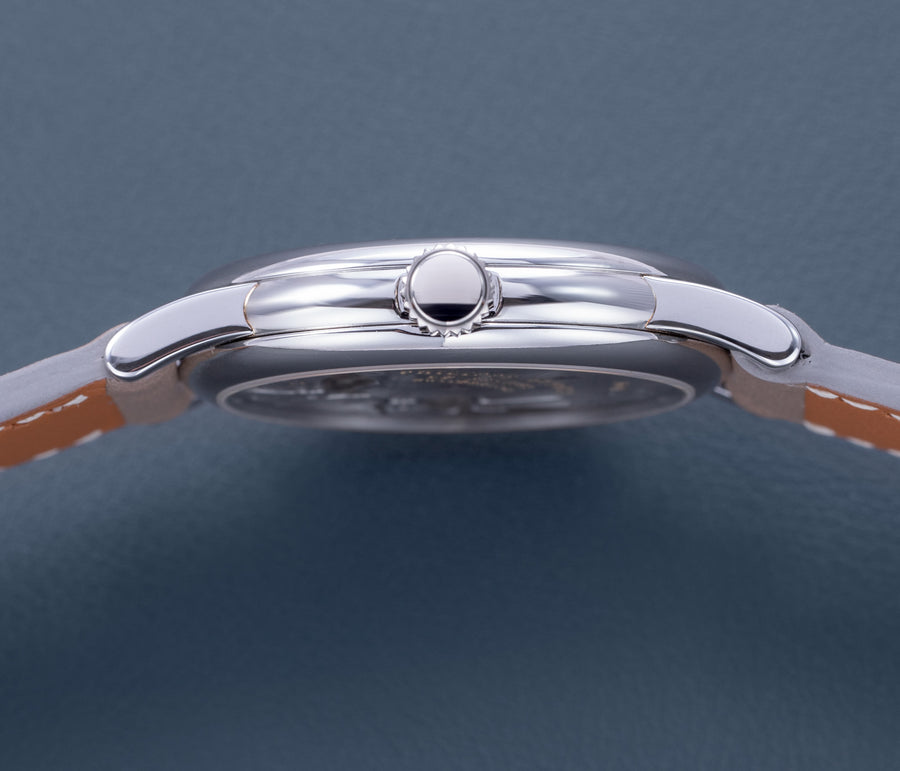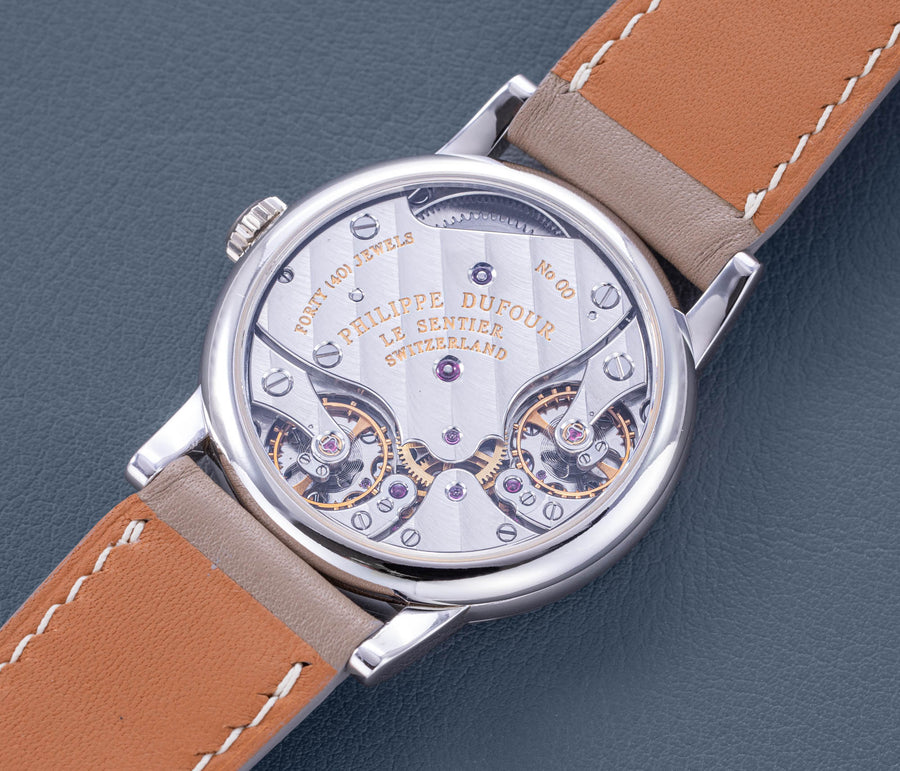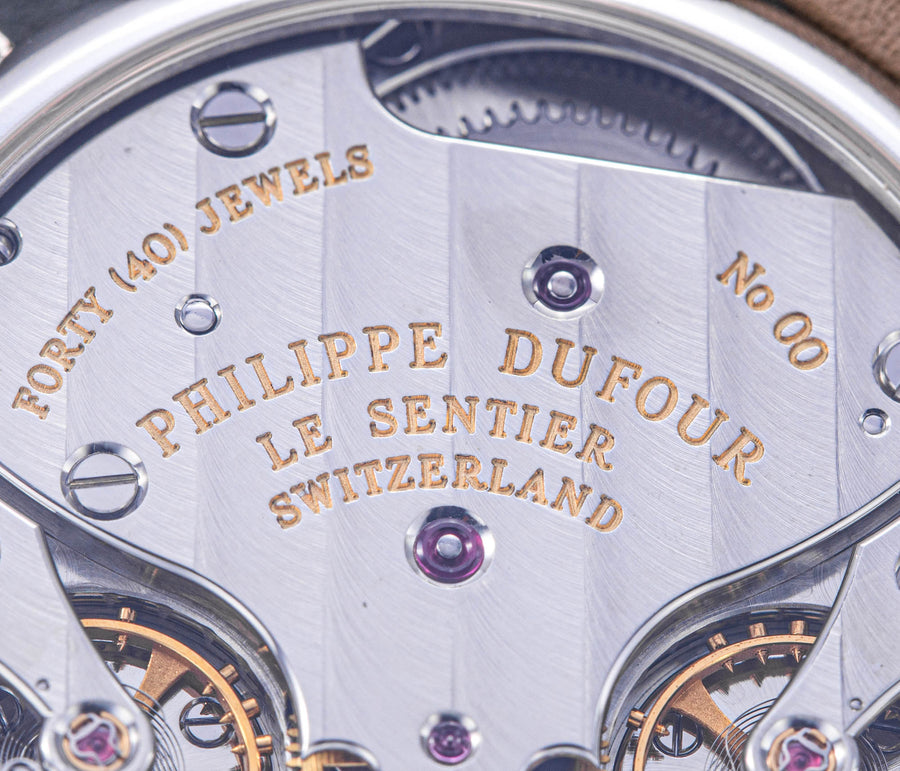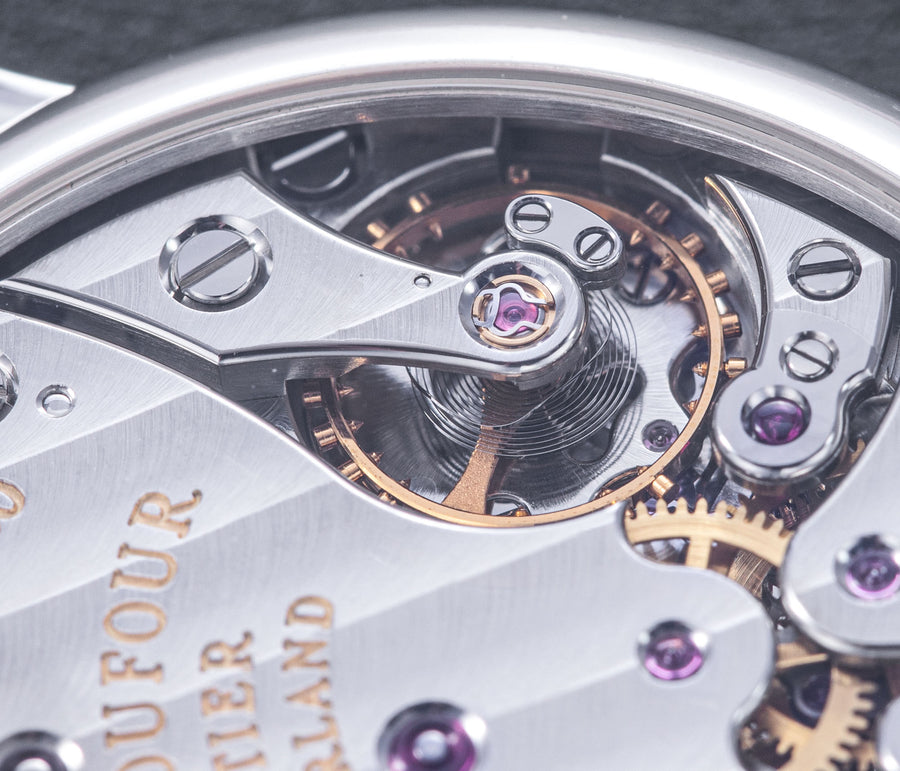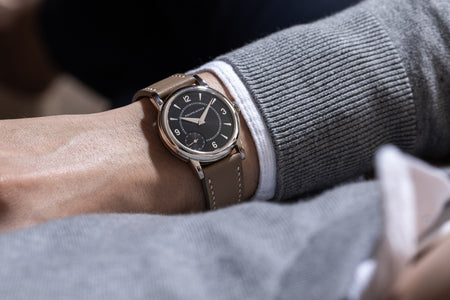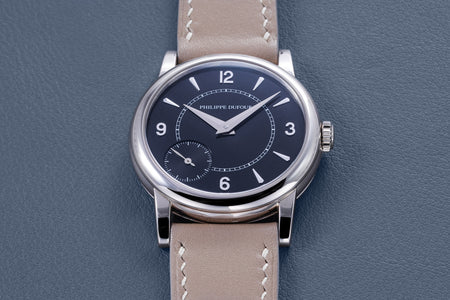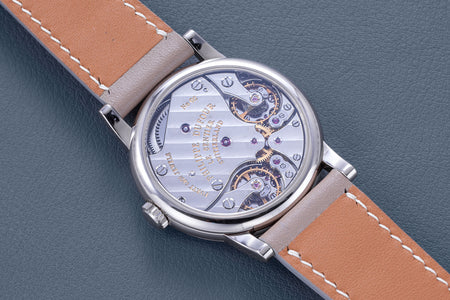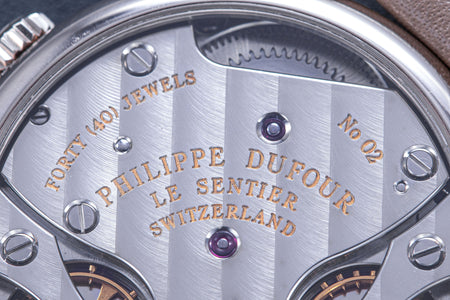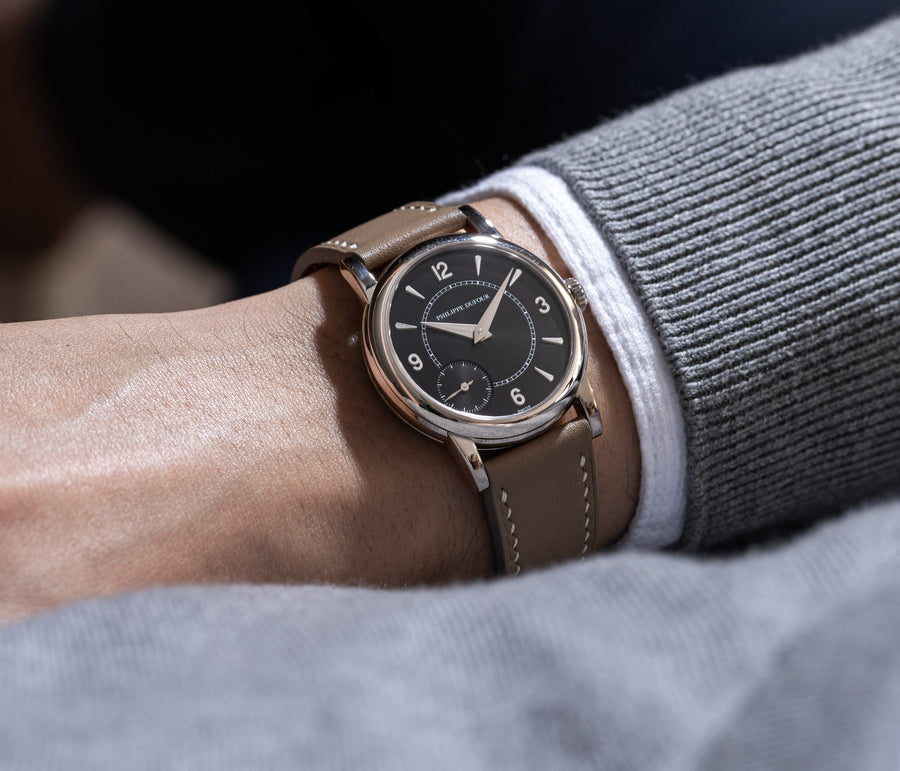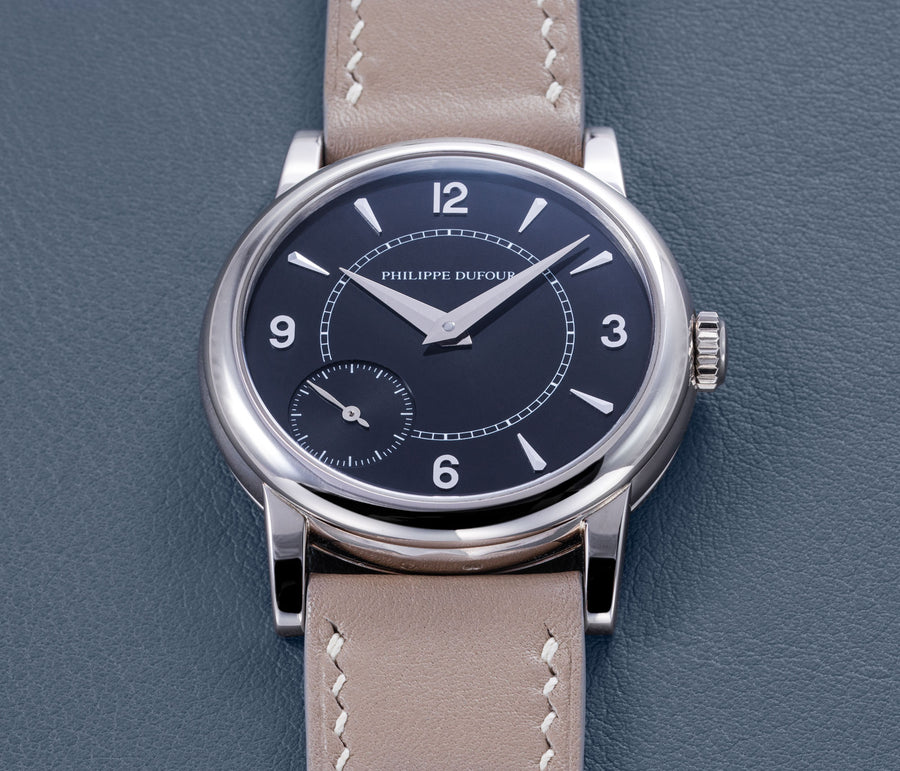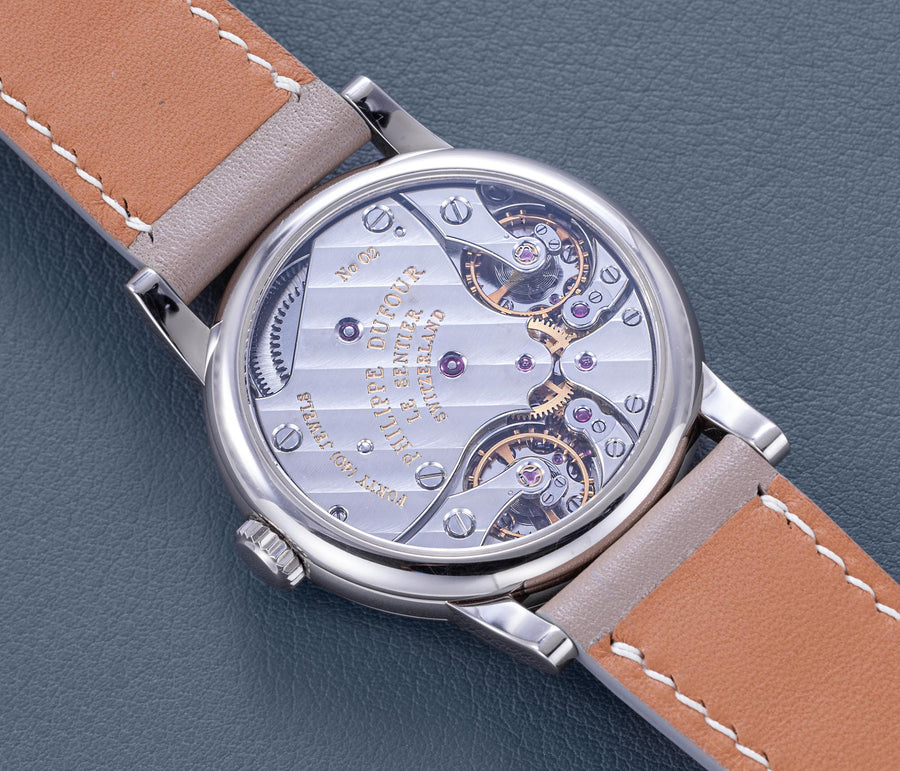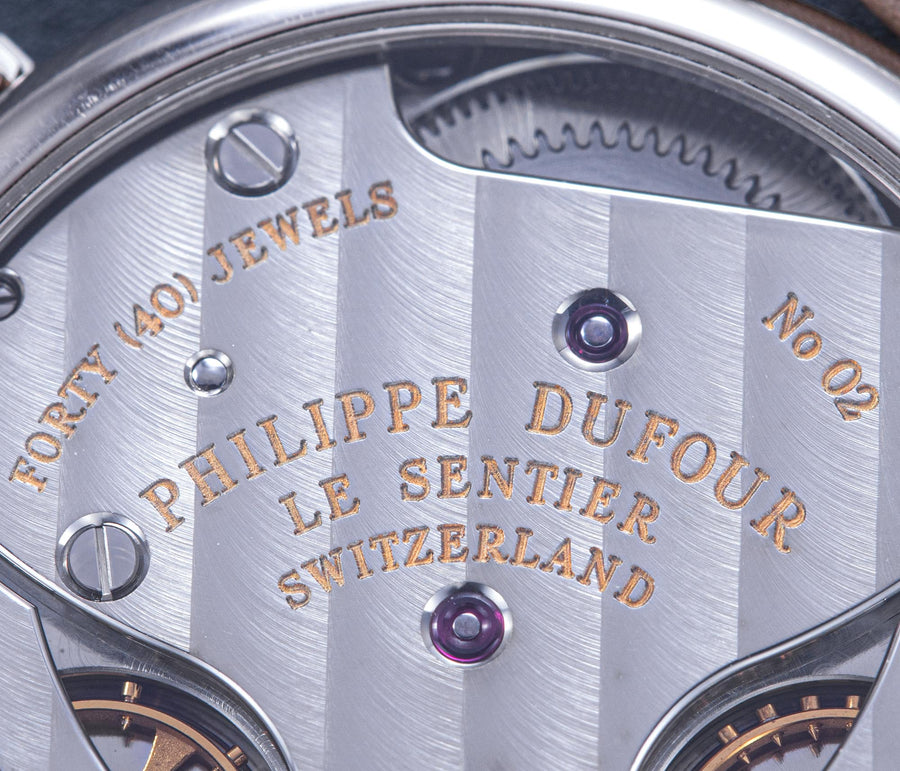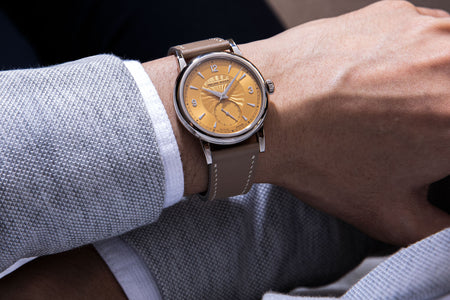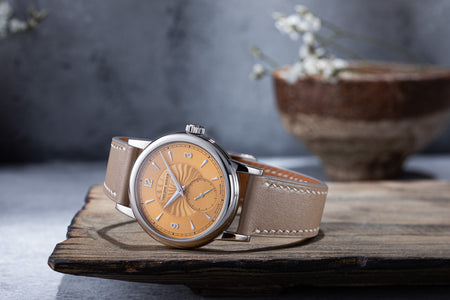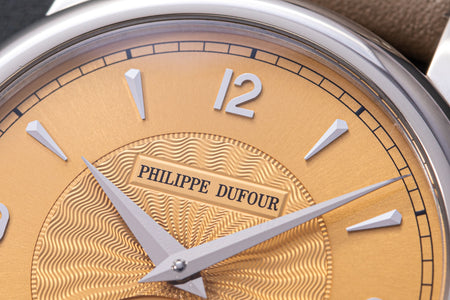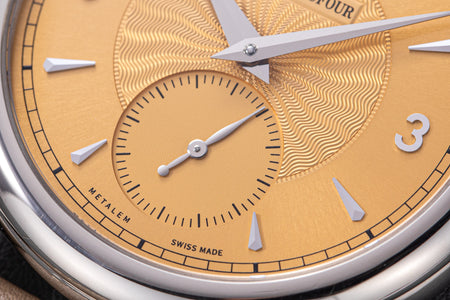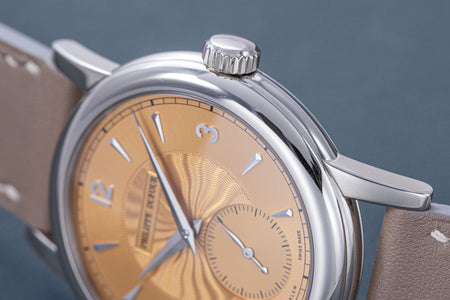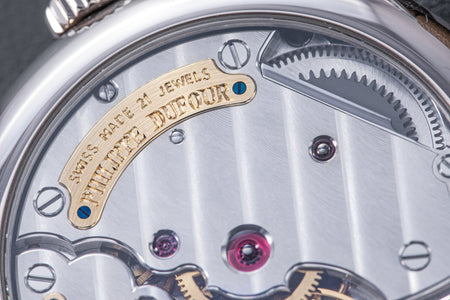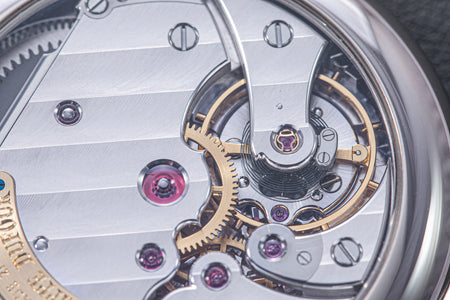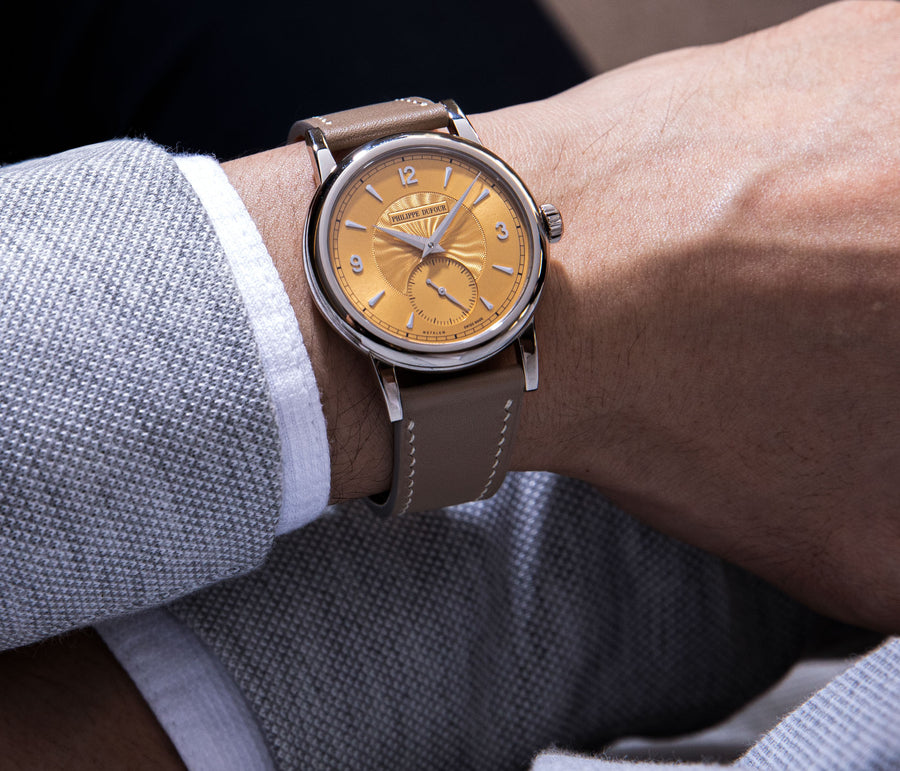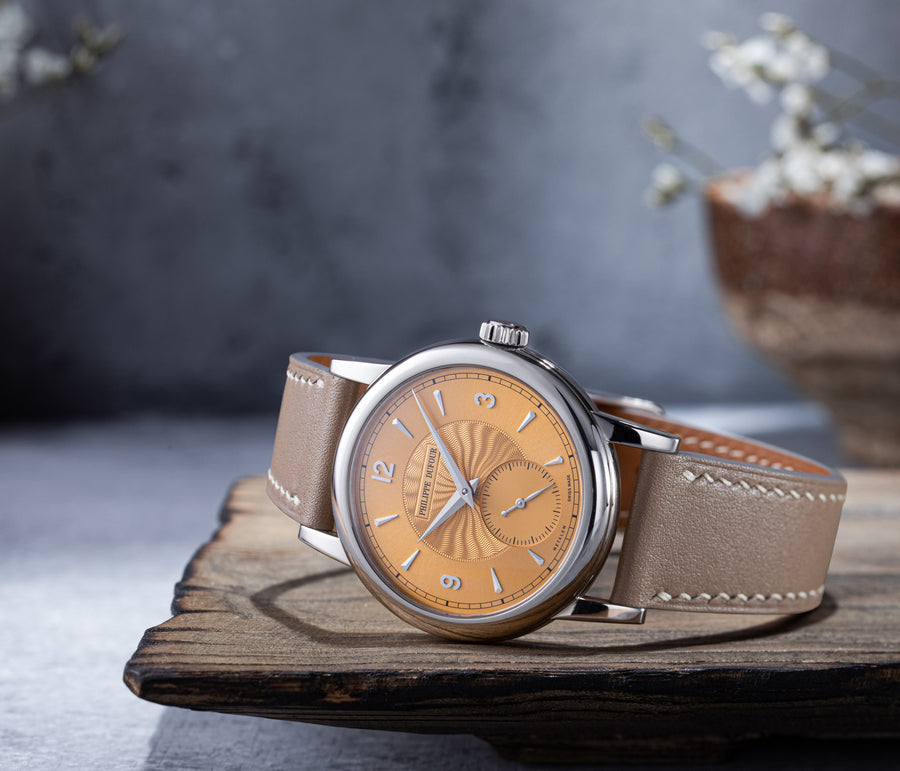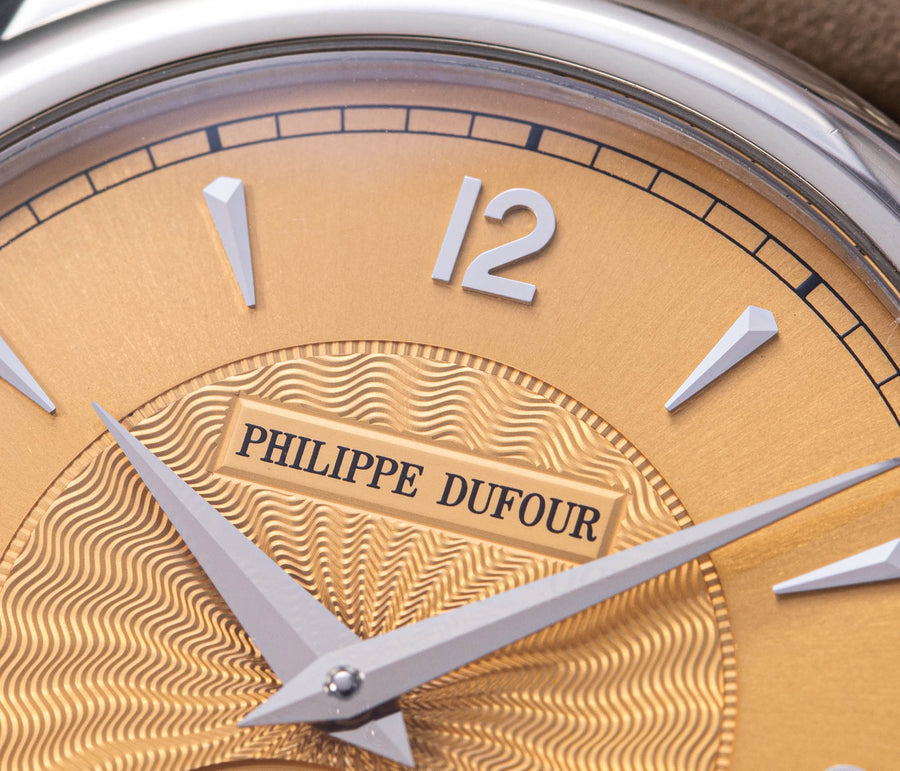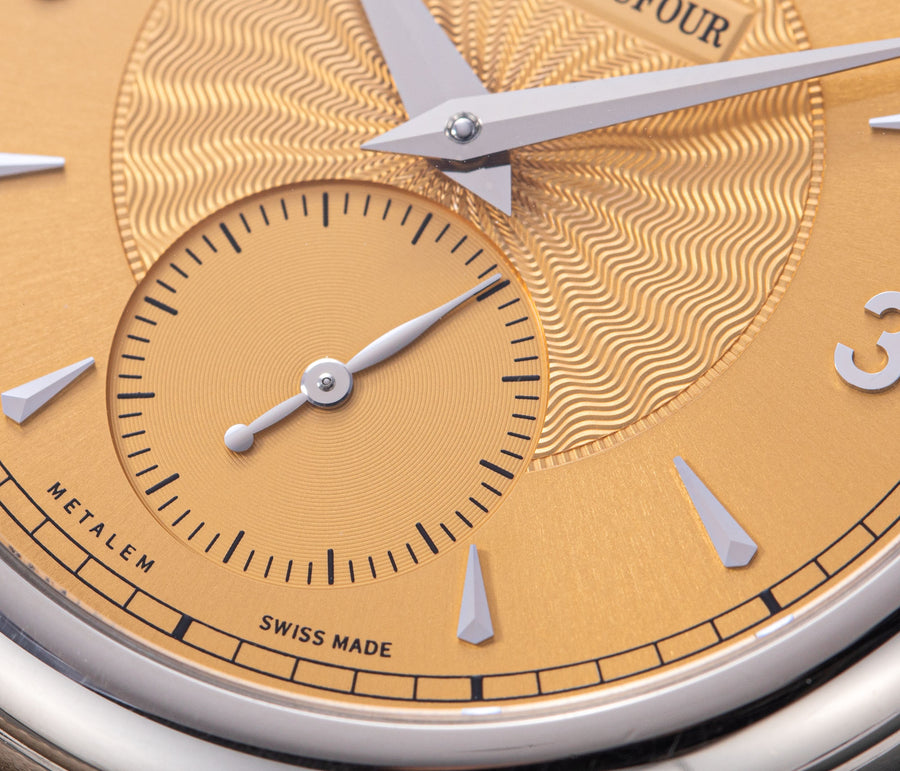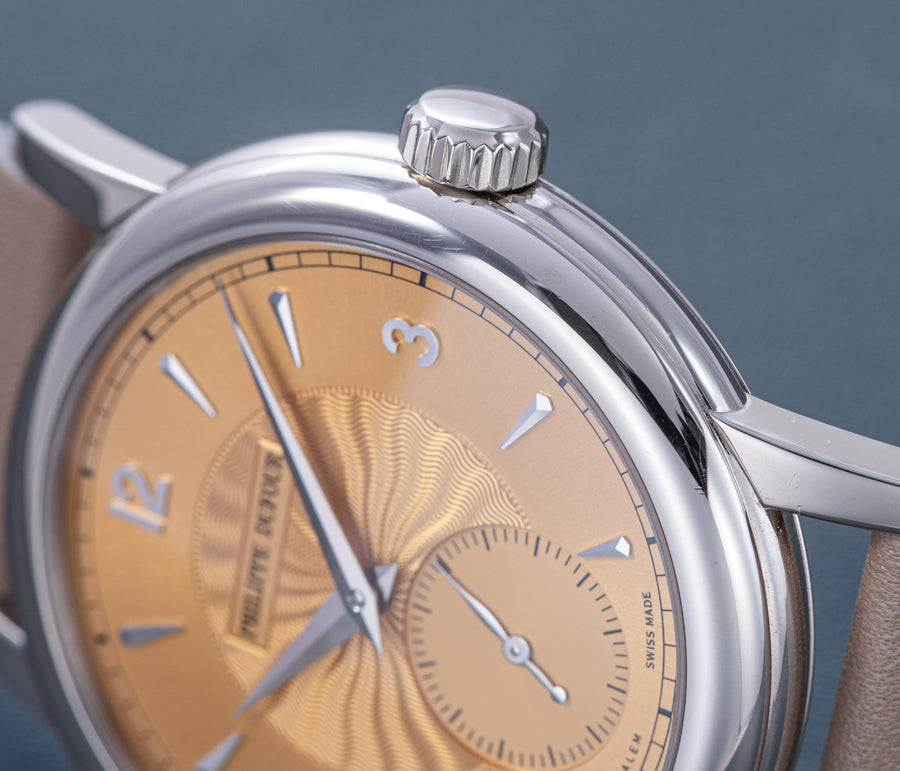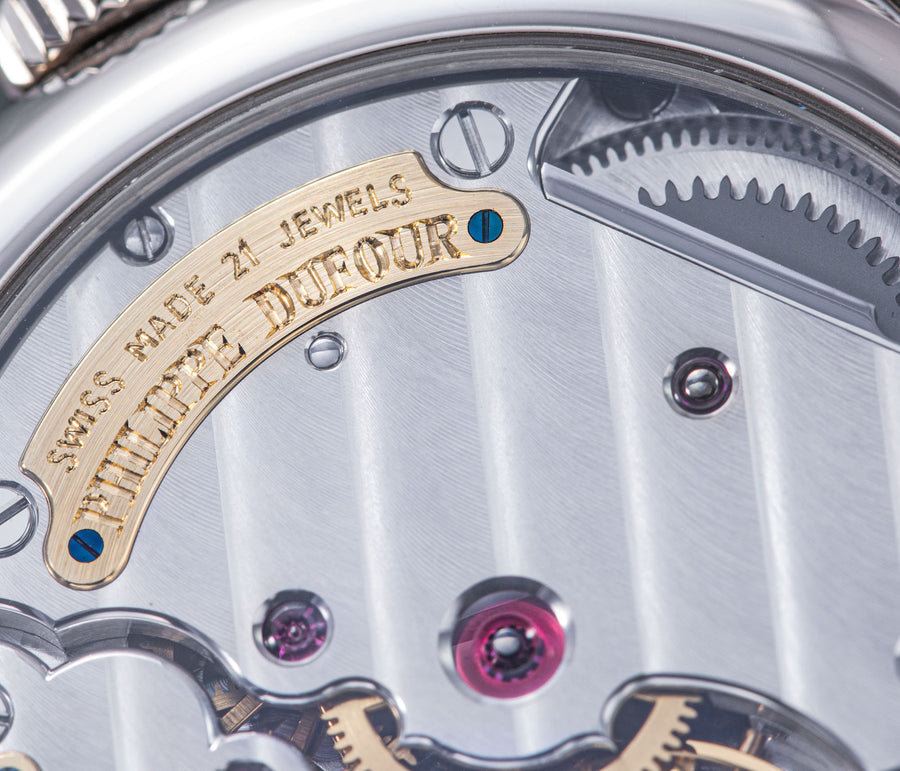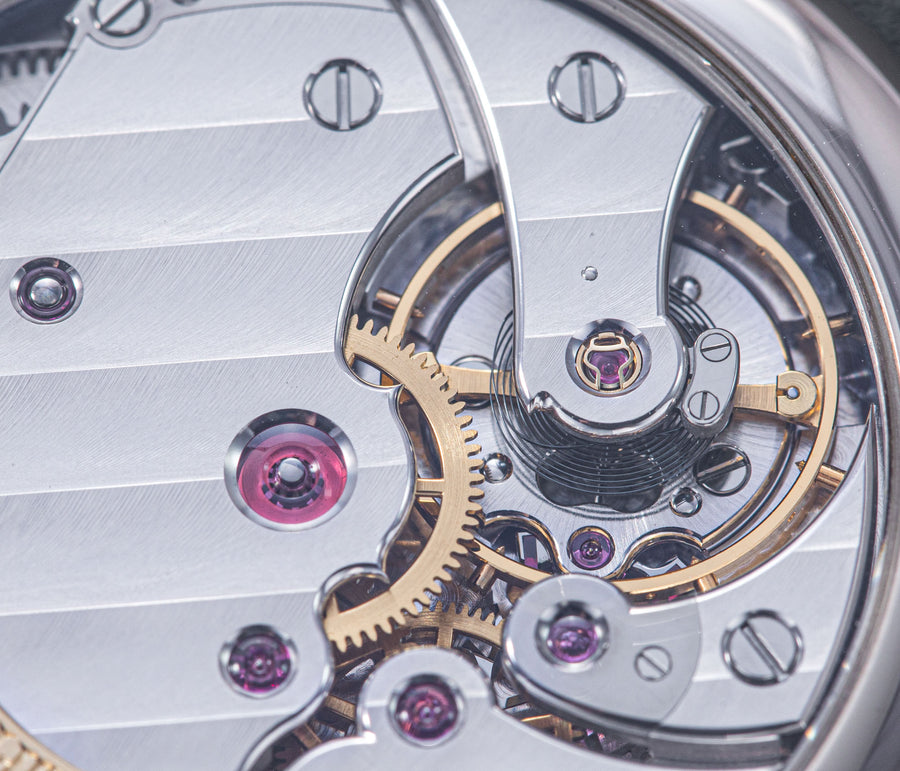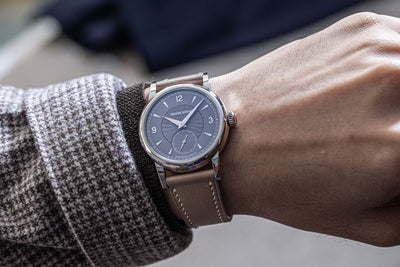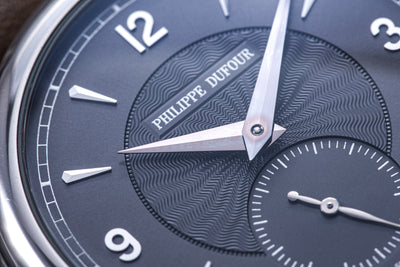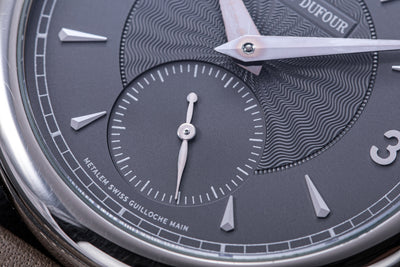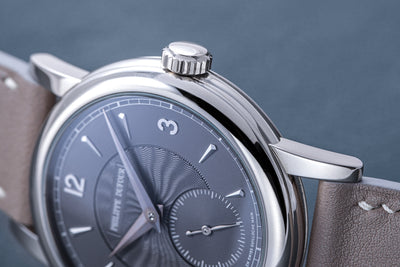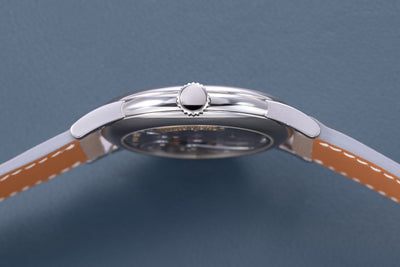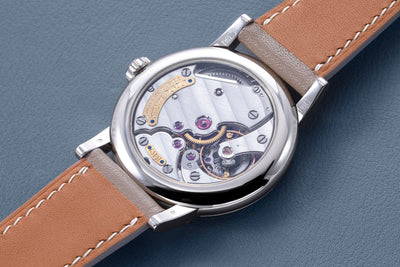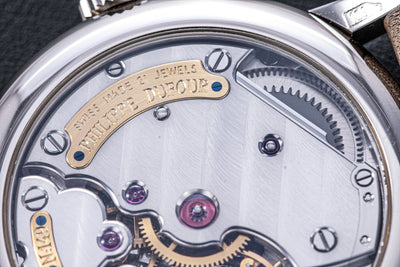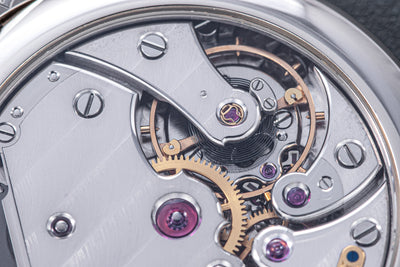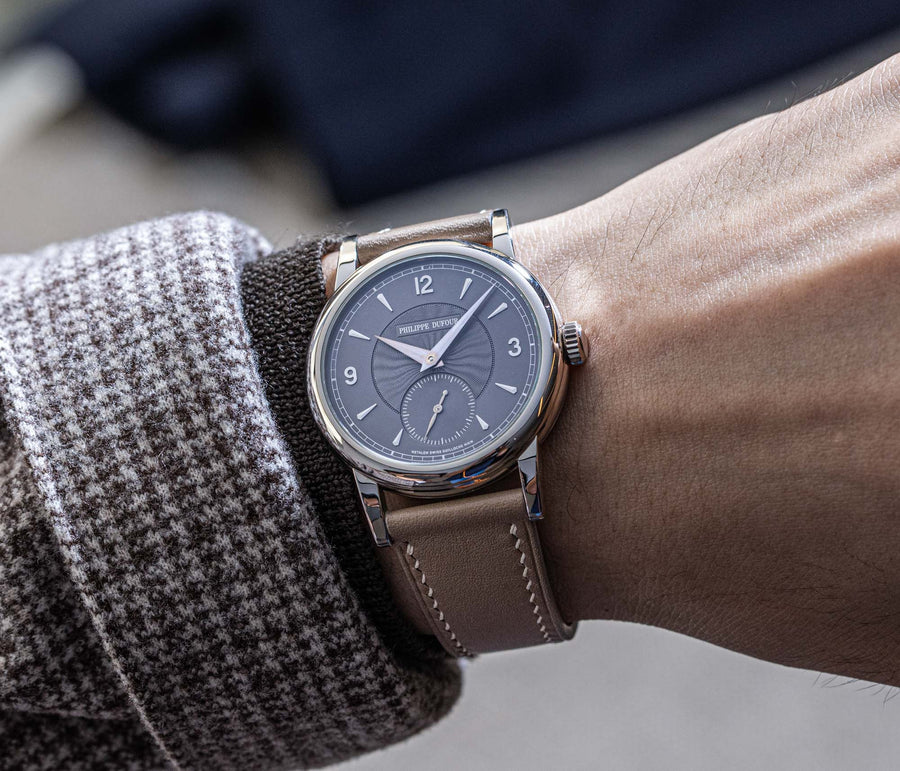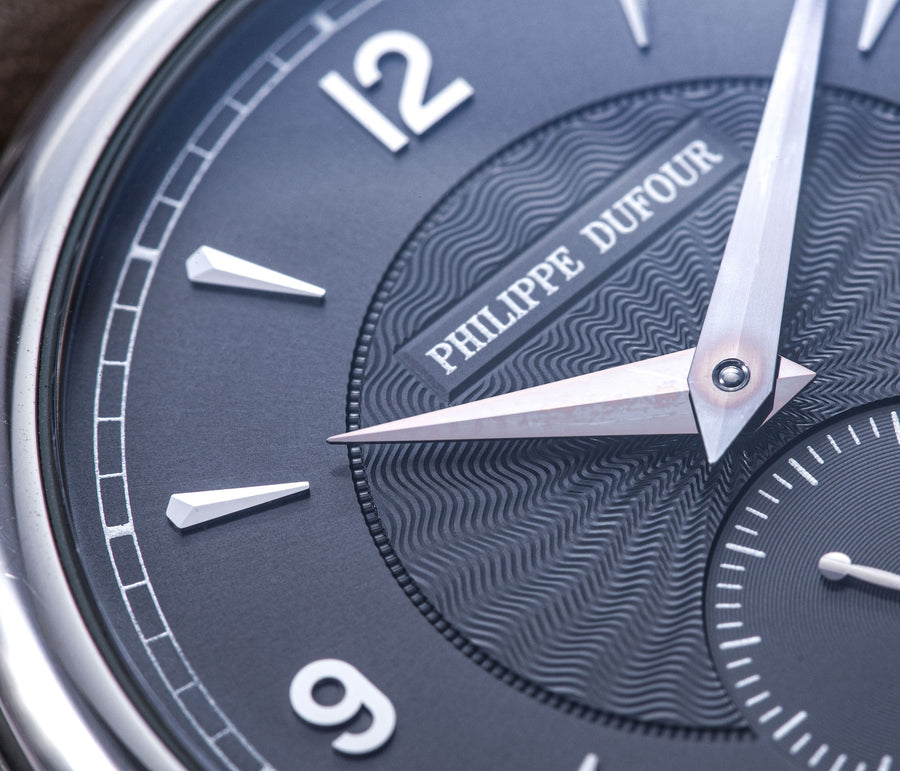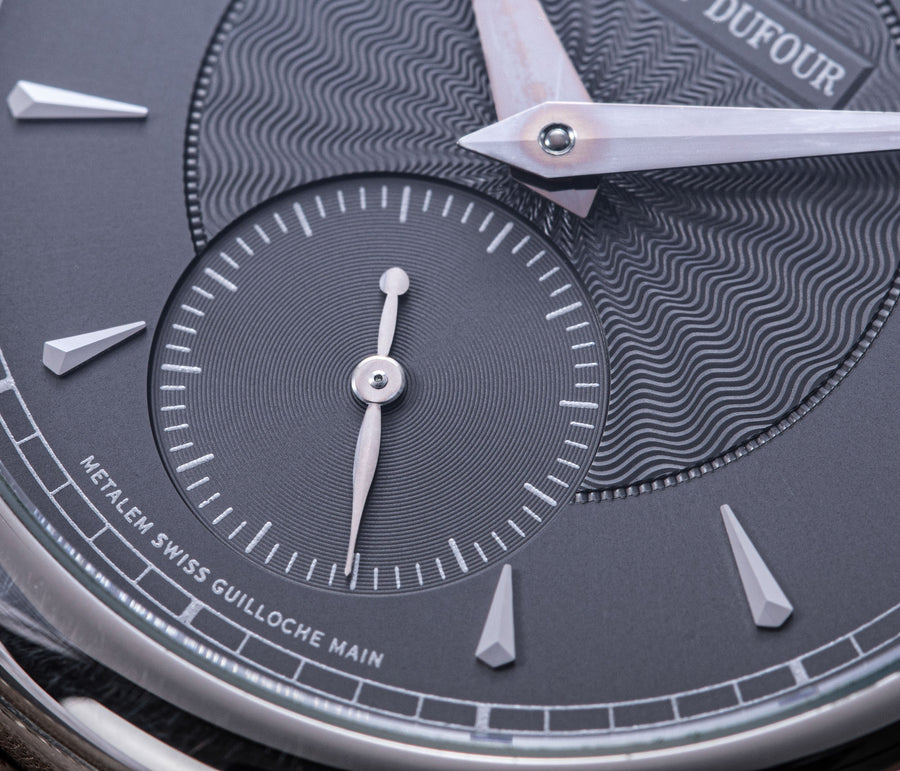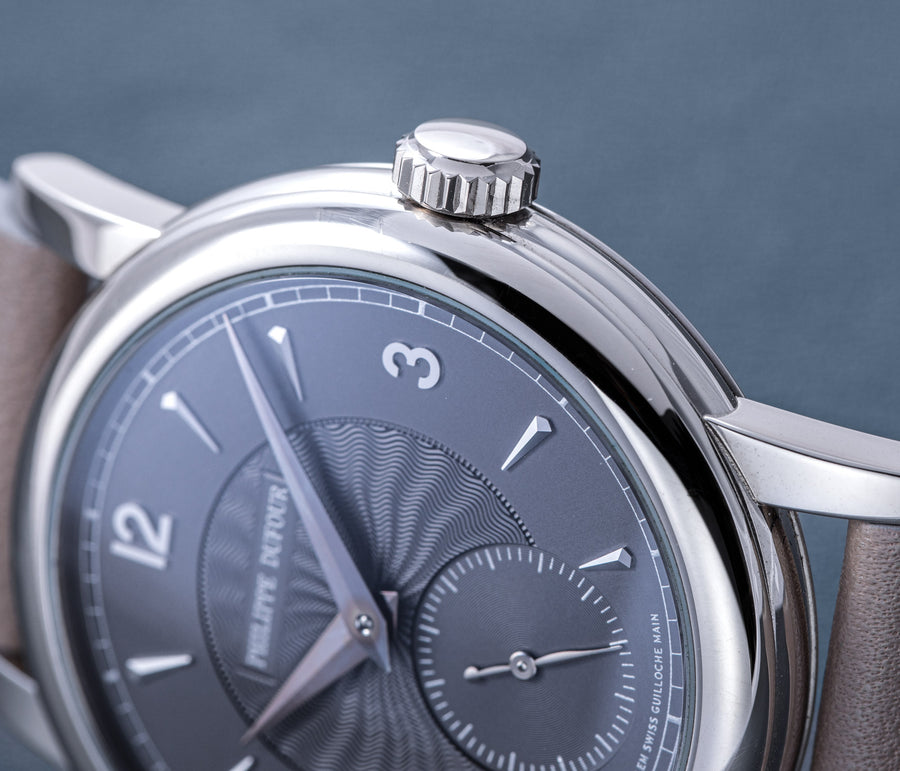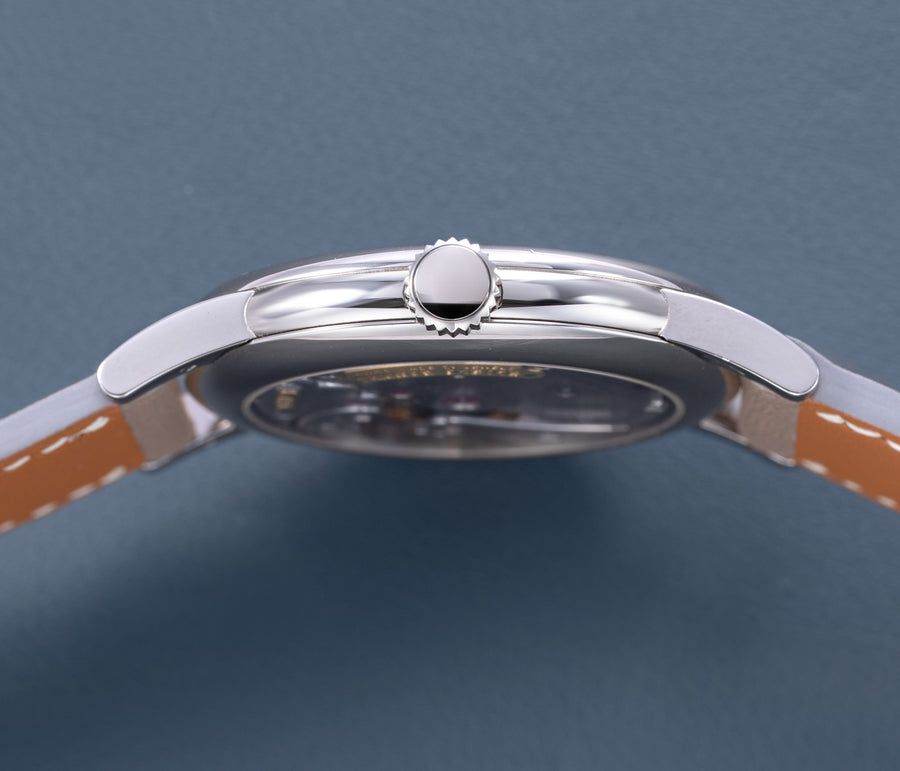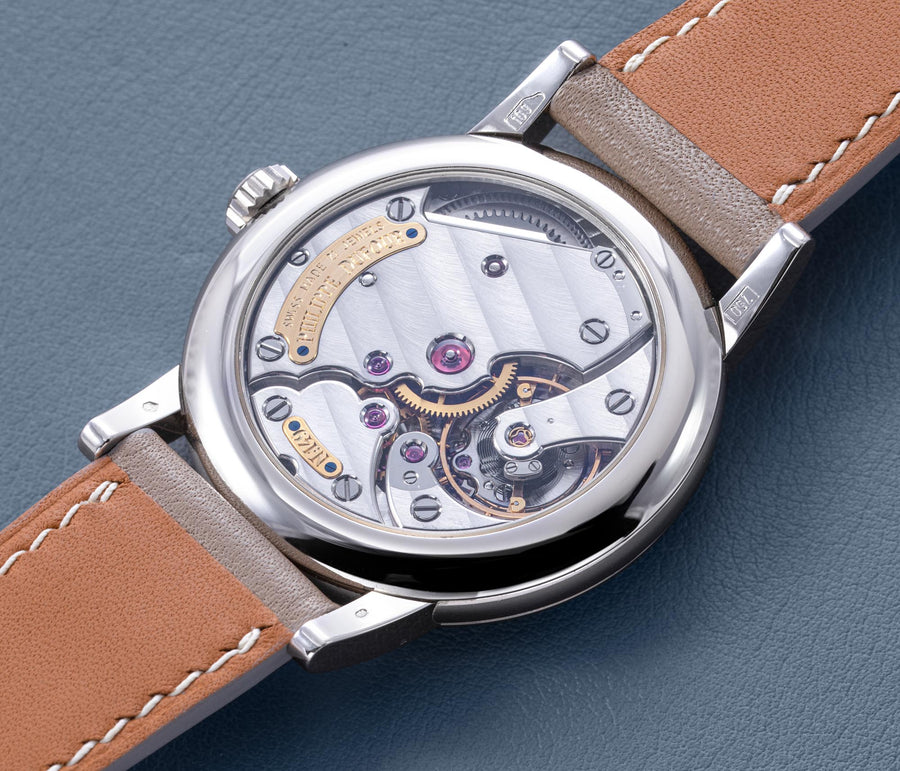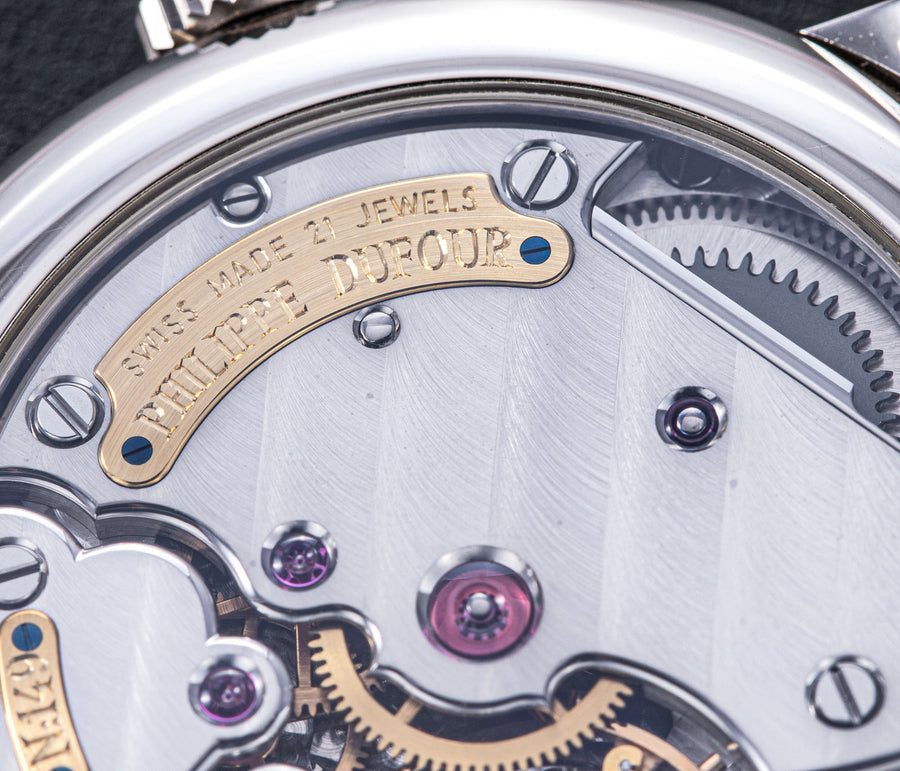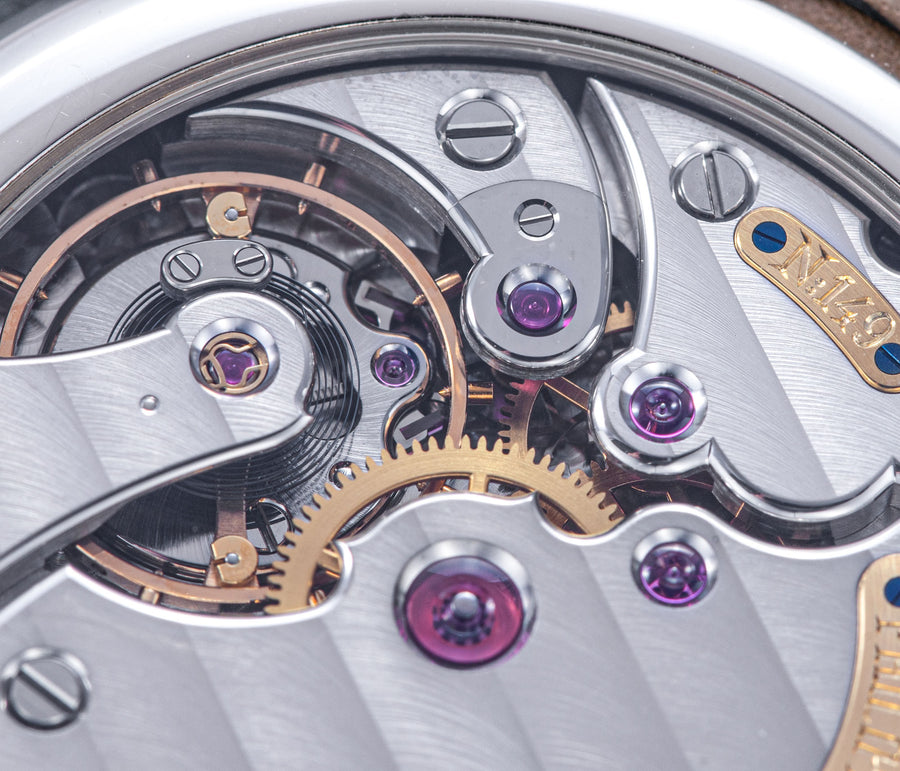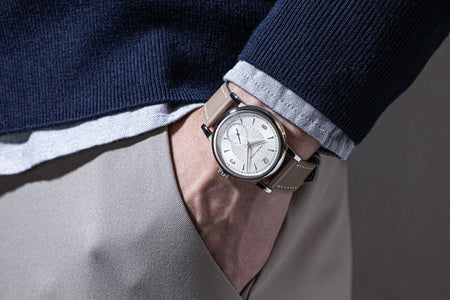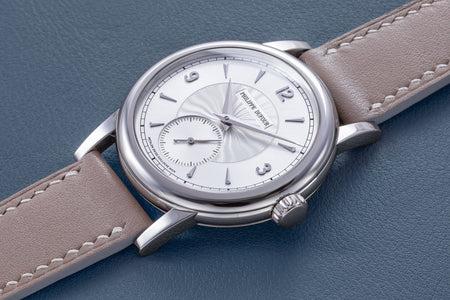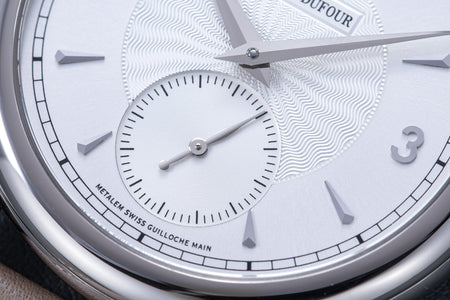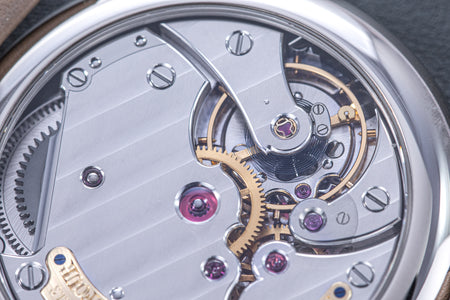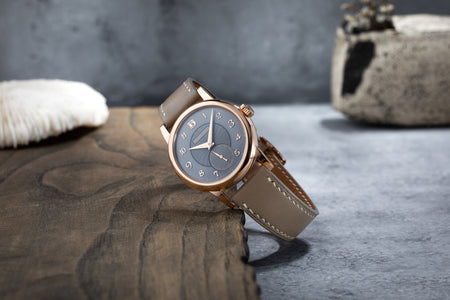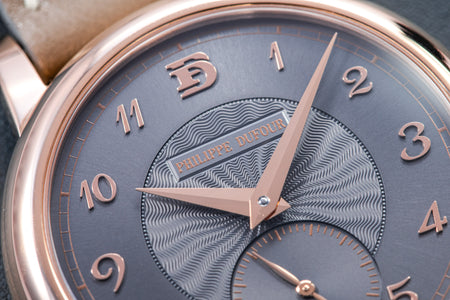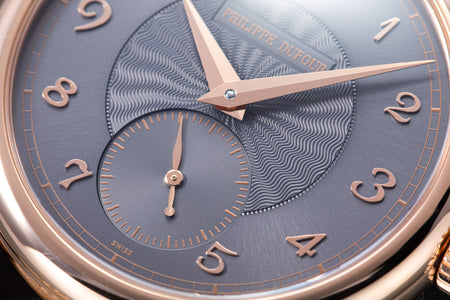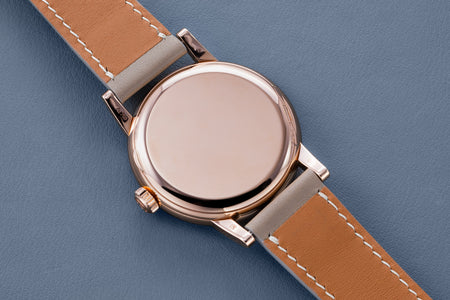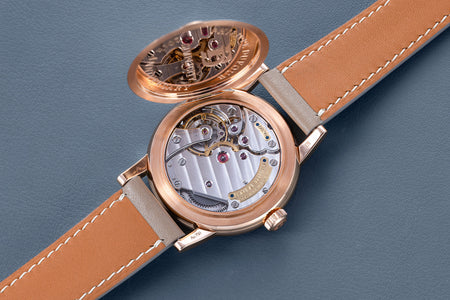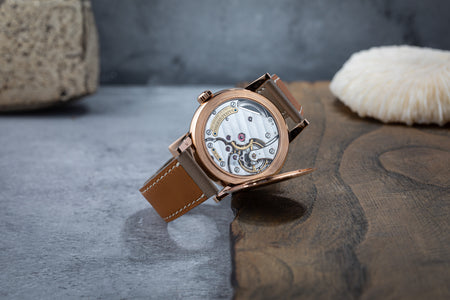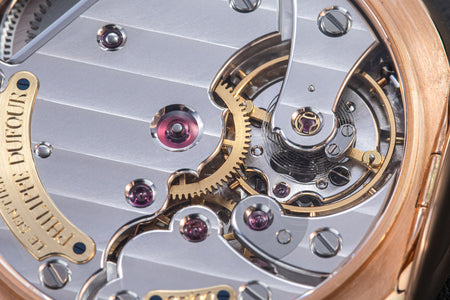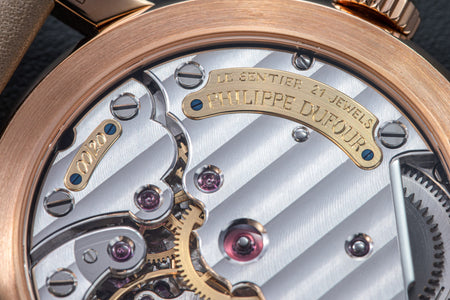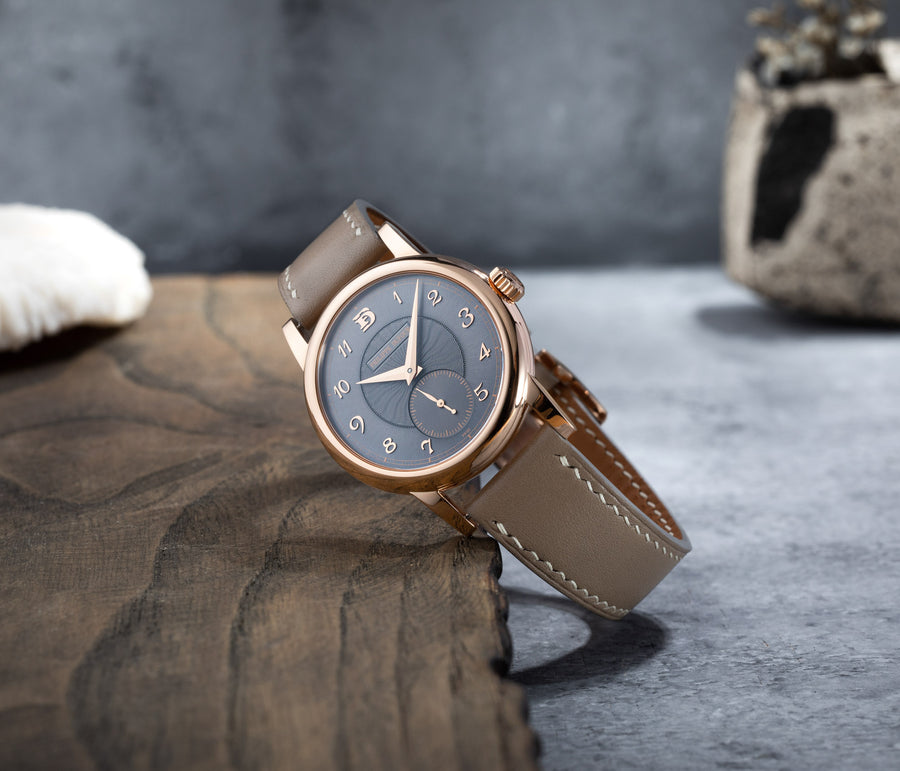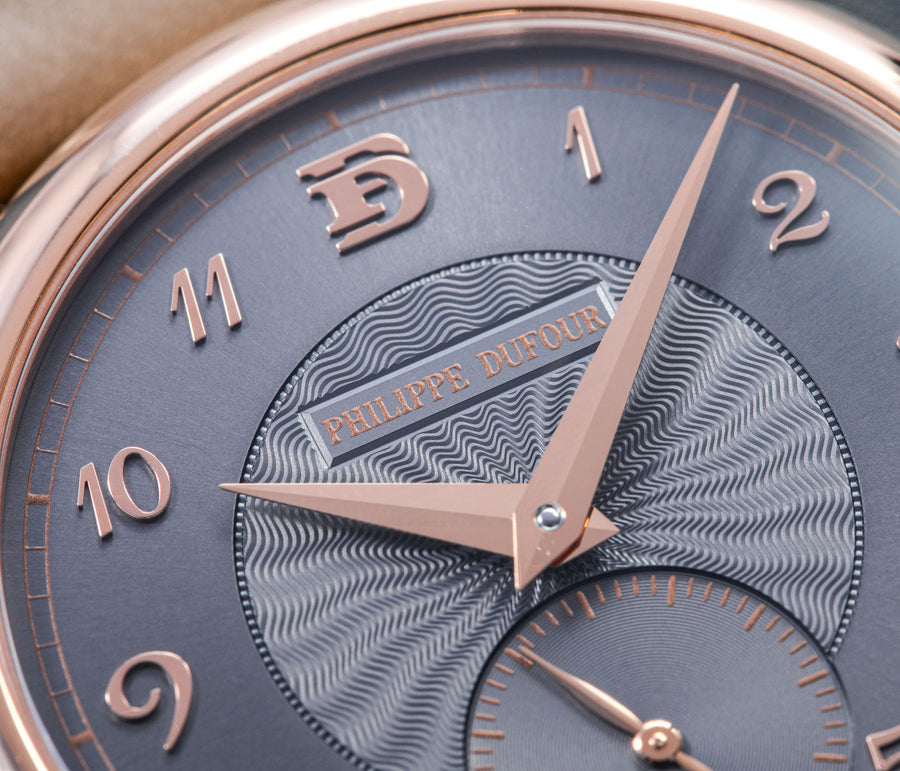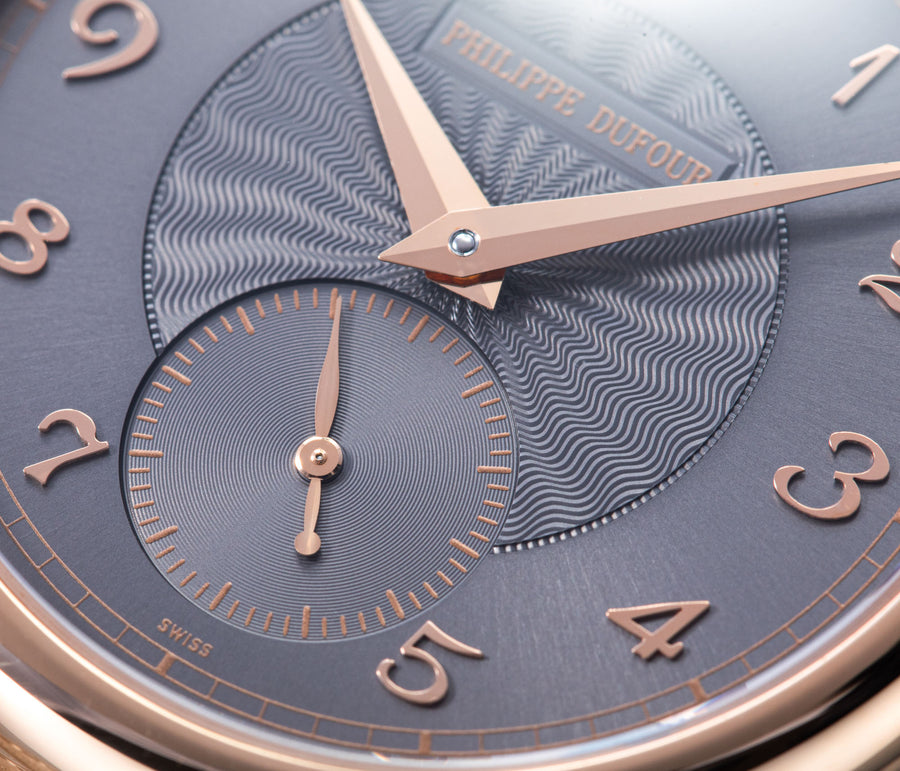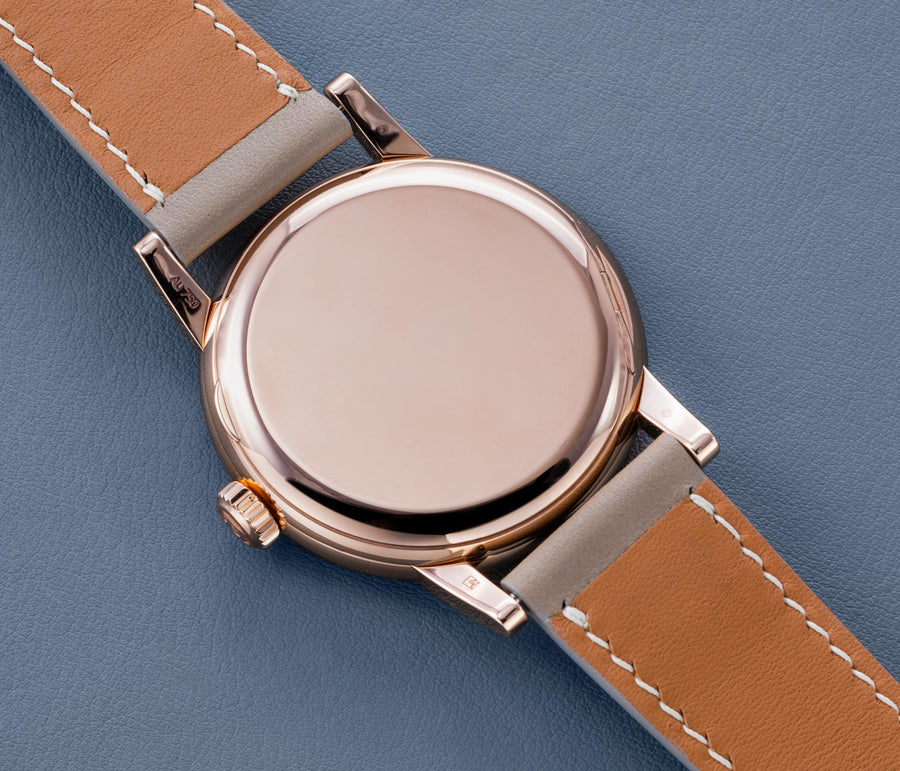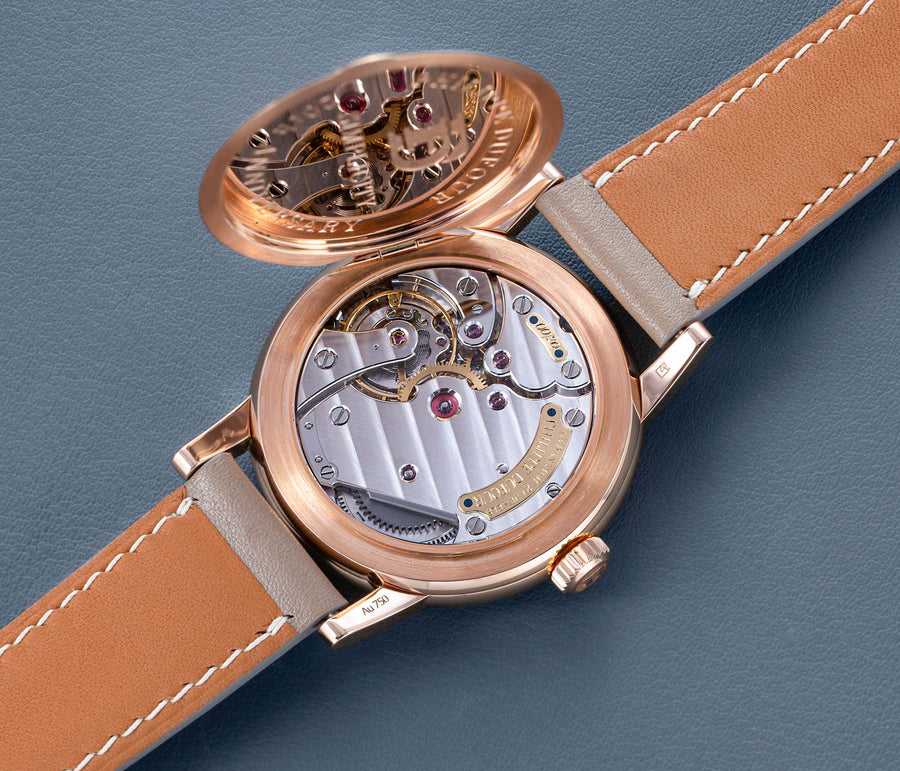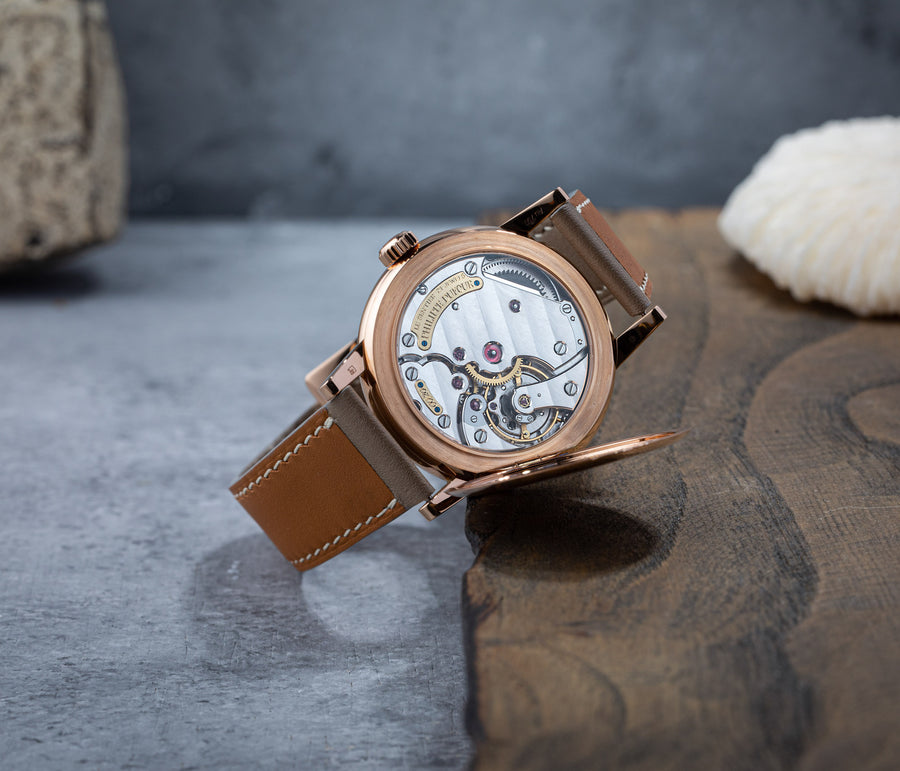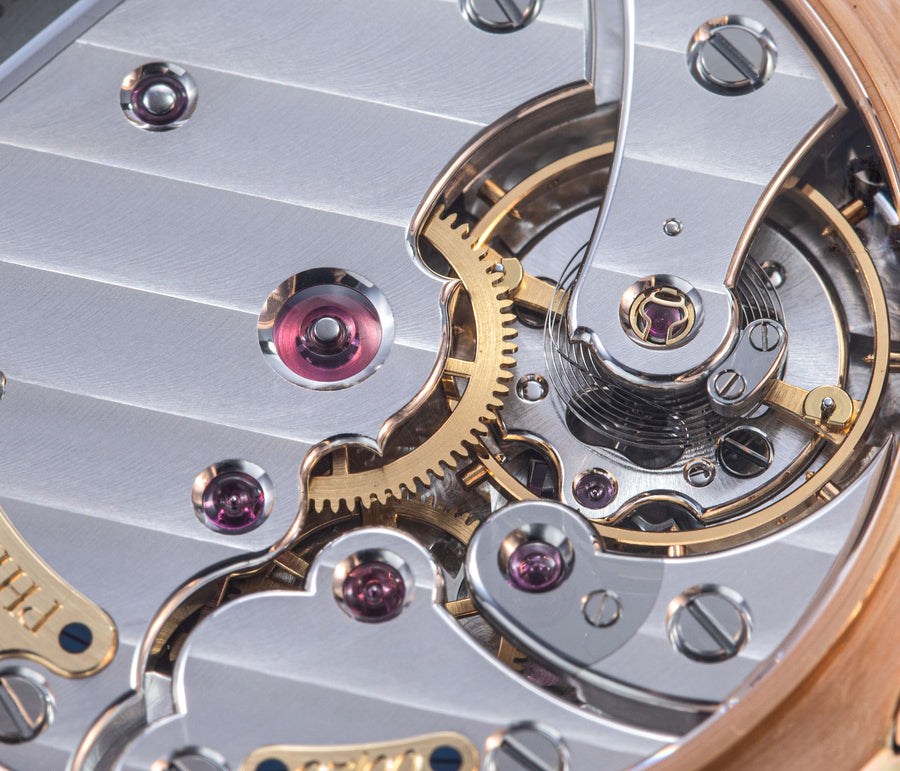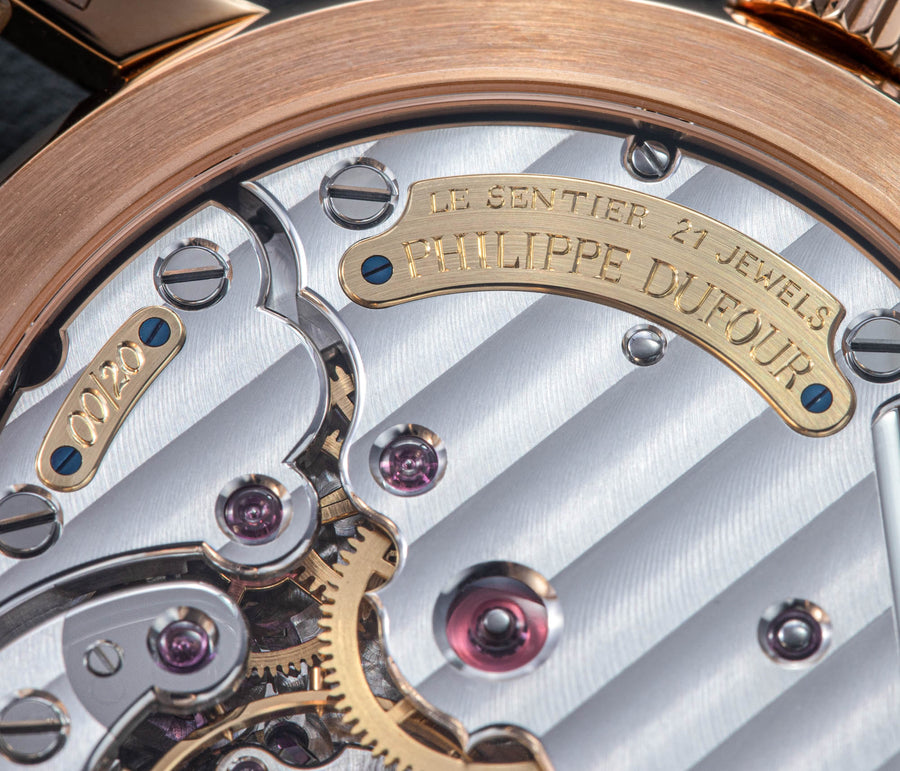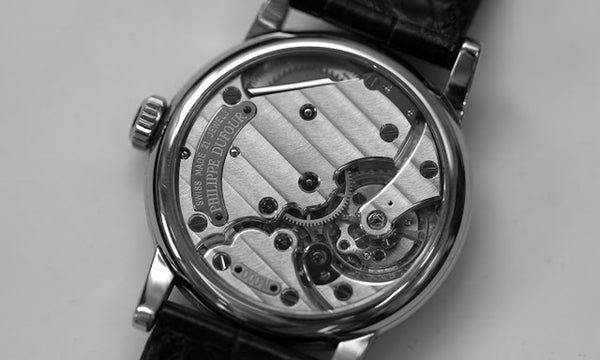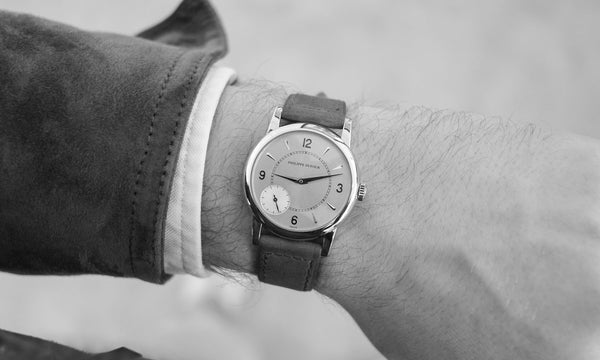"I have no secrets as past watchmakers had. There are graveyards full of secrets and that’s enough."
As traditional mechanical watchmaking in Switzerland was seemingly coming to an ignominious end in the 1970s during the Quartz Crisis, a handful of individuals were doing their bit to keep things going. Whilst brands such as Patek Philippe and Rolex had visionary leaders at the helm and, who held firm to the ideals of mechanical watchmaking, there were also several stubborn artisans with an independent streak as well as mechanical talent. All began their careers modestly, but a handful grew in stature, becoming pioneers in what is today referred to as independent watchmaking.
Given his longevity and sustained success, one of the best known today is Philippe Dufour. Born in 1948 in Le Sentier, a village in the heart of the Swiss jura mountain range and considered as the cradle of high watchmaking, Dufour graduated from his 4 year course in watchmaking to join Jaeger-LeCoultre in 1967 – a most inopportune time given that both the brand and the broader industry were on the cusp of being expunged by the electronic wristwatch. The convulsions experienced by the declining watch industry meant he went from one employer to another in the following years, sending him as faraway as Saint Croix, a small island in the Caribbean.
1999
Philippe Dufour
Grande Sonnerie
Unveiled in 1992, this was first grande sonnerie miniaturised into wristwatch form. Considered one of the most difficult complications in watchmaking, the grande et petite sonnerie chimes the time in passing, sounding both the quarters and hours as they go by. A natural progression from the pocket watches Dufour created for Audemars Piguet in the 1980s, the inaugural series of four watches featured white enamel dials, while the later edition launched in 1999, once again of four watches, two of which were distinguished by its unusual, clear sapphire dial that revealing the striking mechanism. This unique example is in white gold. In recent years, Dufour was known to be working on the last example, which is a pocket watch.
By 1978, Dufour had his own workshop where he made a living restoring antique pocket watches – such timepieces being the flavour du jour of the collecting world where antiquarian horology was the preeminent collecting category. But propelled by a sense of history, he quixotically sought to recreate the grandest timepieces of Switzerland’s glory days as a watchmaking nation despite the tepid demand for such complicated watches at the time.
Soon he had built the first watch movement of his own, an endeavour that took some 2,000 hours. A grande et petite sonnerie for a pocket watch, Dufour’s creation was as fine and sophisticated as the watches that inspired him, the best striking watches of the early 20th century made by the likes of Louis Elisée Piguet, a movement specialist that supplied names like Patek Philippe and Vacheron Constantin.
But Dufour had to find a buyer for his creation, and at the time, the only takers were the watch brands in the region around his hometown, few of which were in a position to sell such an expensive watch. Audemars Piguet emerged to order five grande sonnerie movements, with the first delivered in 1982, and the last six years later.
Dufour has long stated publicly the anonymity of this body of work – his name was to be found nowhere on the Audemars Piguet watches – gnawed at him. And what has now become industry lore has it that not one, but two of the grande sonnerie watches were carelessly damaged after it had been handed over to Audemars Piguet, contributing to Dufour’s decision to go it alone. And so he started work on something that would have his name on the dial, which became the first-ever grande sonnerie wristwatch. He had a dream to realise this ambition after mortgaging his house. In 1991, a Singaporean friend of Dufour's - David Lee, convinced him to fly to Singapore where he was introduced to the Sales Director of The Hour Glass - Robert Seah. It was there he secured his first order for the first Grand Sonnerie wristwatch. This watch made its debut at the 1992 Basel Fair. Upon this launch, Dufour was able to secure an additional order for three more of these Grand Sonneries. These first four Dufour Grand Sonneries all had a high-fired white enamel dial and were cased in yellow gold, rose gold, white gold and platinum. And all four watches were placed to a family hailing from an oil rich South-East Asian sultanate.
1933
Albert Piguet
Albert Piguet Dual Escapement
The movement has a single gear train driving double balance wheels linked by a differential, constructed to keep time according to the principles of resonance. This is one of the very movements that inspired Philippe Dufour to create the Duality.
1996
Philippe Dufour
Duality Prototype #00
The Duality was inspired by several pocket watches produced in the 1930s by students at the watchmaking school of Le Sentier, Dufour’s hometown. Though individually different, all relied on the same dual-balance wheel construction, including a 1933 specimen that was built by Albert G. Piguet (1914-2000) and who later rose to be the head technical director at Lemania.
1996
Philippe Dufour
Duality
Perhaps Philippe Dufour’s most unusual creation, the Duality features twin oscillators linked by a differential that averages out the rate of the two, reducing variations in timekeeping. Unveiled in 1996, the Duality was envisioned as a series of 25, but only nine examples were made. This example is an unique execution of this series of Duality wristwatches.
2020
Philippe Dufour
Simplicity
Philippe Dufour’s best known timepiece, the Simplicity very much lives up to its name. Its aesthetics, inside and out, are modelled on 1940s gentlemen’s wristwatches produced in the Vallée de Joux, which were characterised by classical styling and robust, workmanlike quality. But Dufour has elevated the movement decoration of the Simplicity to another level.
2020
Philippe Dufour
Simplicity 20th Anniversary Prototype #00
In celebration of the 20th anniversary of the Simplicity, Dufour announced the launch of the anniversary model in a limited edition of 20 watches. Executed in platinum, white gold and pink gold, all examples will feature a hinged, hunter case back along with redesigned dials.
Learn More
DISCOVER MORE
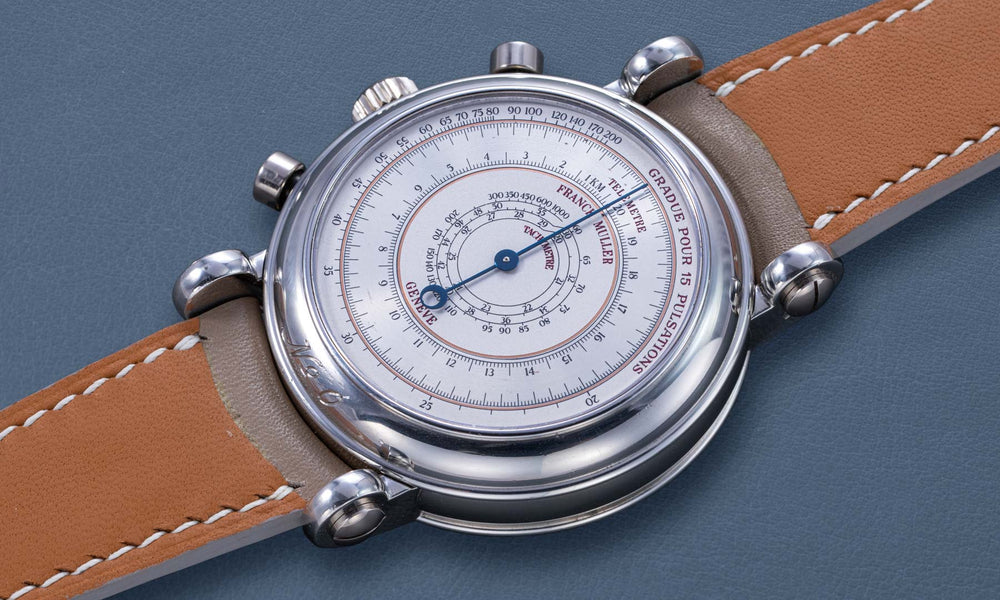
The Eighties Hotshot
FRANCK MULLER
ENTER ROOM
THE CHAMPION OF LA VALLÉE
DANIEL ROTH
ENTER ROOM





